Table of Contents
In this blog post, we will take you on a journey through the roots and evolution of traditional tattooing, exploring the significant aspects that give it its distinctive appeal. From its fundamental characteristics, styles and techniques, to the symbolism and stories they represent, our aim is to broaden your understanding and appreciation of this enduring form of self-expression.
This in-depth exploration will also shed light on the influential tattoo artists who shaped the tradition, and the different regions around the world with their unique adaptations of this art. You will also learn about the process involved in getting a traditional tattoo, from the selection of design and placement, to the healing and aftercare processes.
Whether you are a tattoo enthusiast, a history buff, or simply curious about the art of tattooing, this exploration will deepen your respect for the craftsmanship behind each design, and the historical significance they carry. Come with us on this enlightening journey into the world of traditional tattoos, where each mark tells a tale, and every design holds a world within itself.
Beautiful Traditional Sleeve Tattoo Ideas
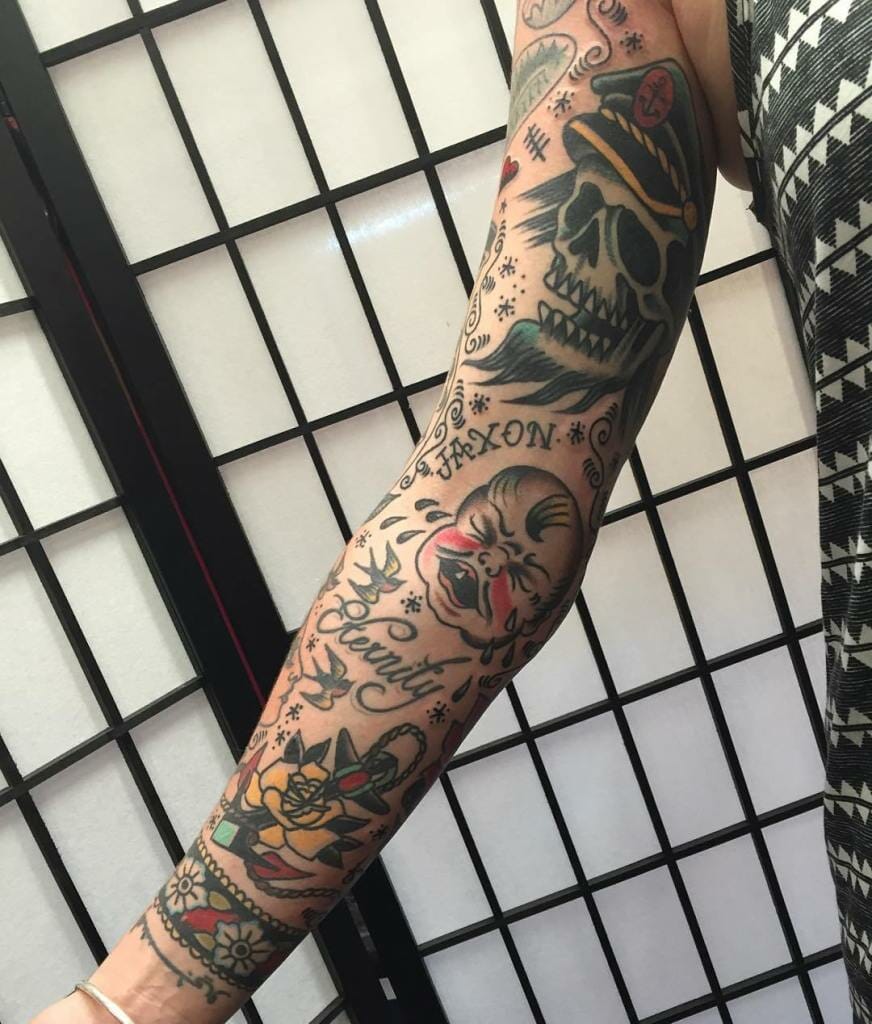
Often referred to as an old school tattoo, traditional tattoos are known for their bold outlines and diverse color palette. The full sleeve rendition of this style transforms the body into an artistic canvas, with each element contributing to an intricate tableau of imagery. An added advantage of sleeve tattoos is their concealability, allowing individuals to navigate more conservative settings effortlessly.
Traditional School Sleeve Tattoos
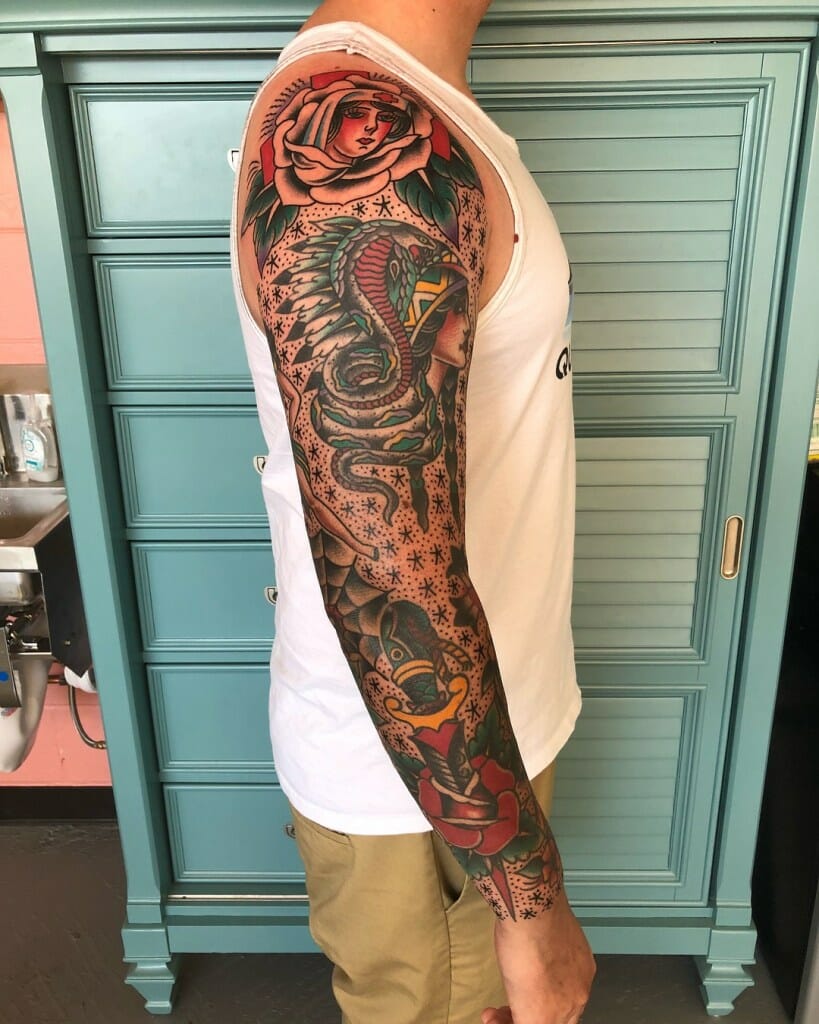
The allure of traditional tattoos lies in their ability to capture attention even when incomplete, making them an ideal choice for sleeve tattoos. Given the time and discomfort typically associated with tattooing, traditional designs can start modestly, gradually evolving and incorporating additional elements as you journey further into the realm of body art.
Cool Flowers Sleeve Tattoo Ideas
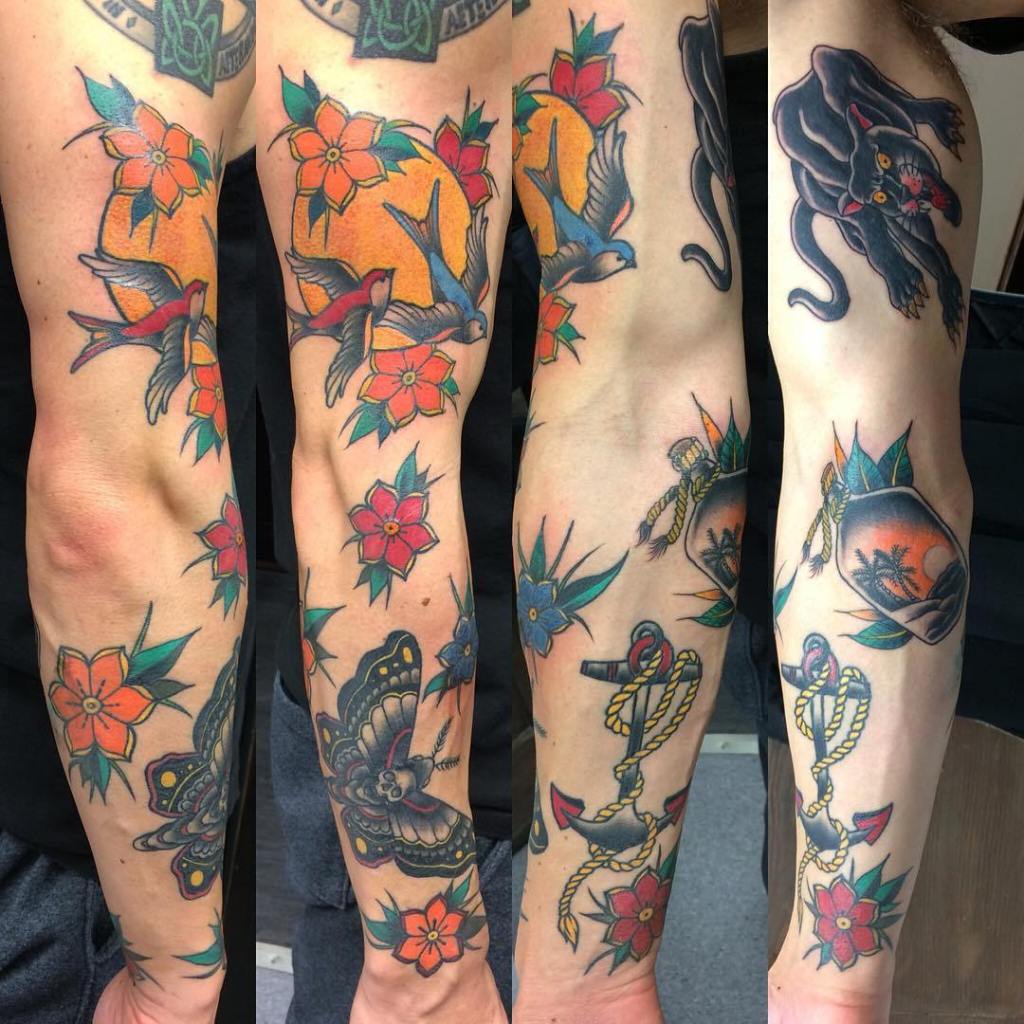
A traditional sleeve tattoo can derive its inspiration from a multitude of sources. From delicate flowers and vibrant birds to more abstract motifs such as cars, traditional tattoos grant the freedom to amalgamate an array of designs into a cohesive piece. You can pace the inking process to suit your preference, allowing for the addition of black ink or new elements over time, promising a unique sleeve that captures both your vision and admiration of others.
Old School Traditional Sleeve Tattoo
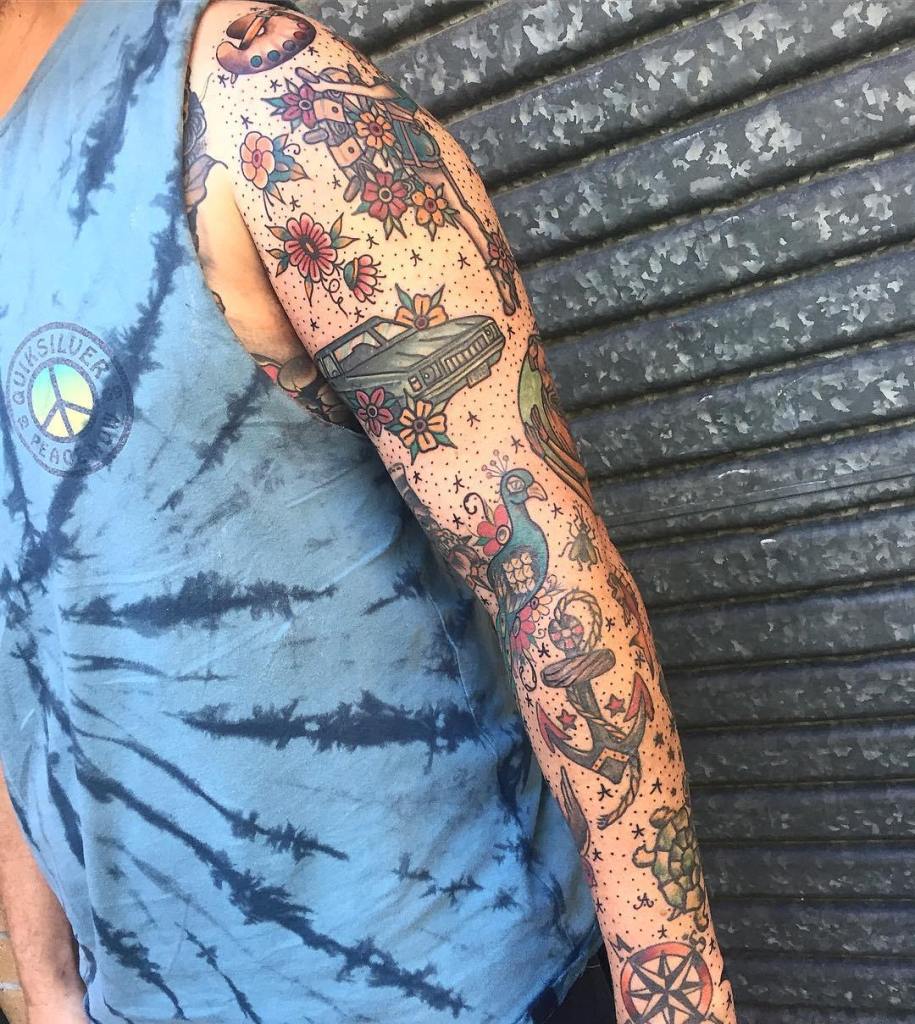
Transforming the body into a living canvas of art is one of the unique aspects of traditional tattoo designs. Unlike some tattoo styles, traditional and sleeve tattoos don’t have to be conceptualized and inked as a unified piece. They can start as separate elements, slowly coalescing into a sleeve tattoo over time. With a blend of black ink and color, these tattoos can present a truly expressive and charismatic statement.
Traditional Dragon Sleeve Tattoo
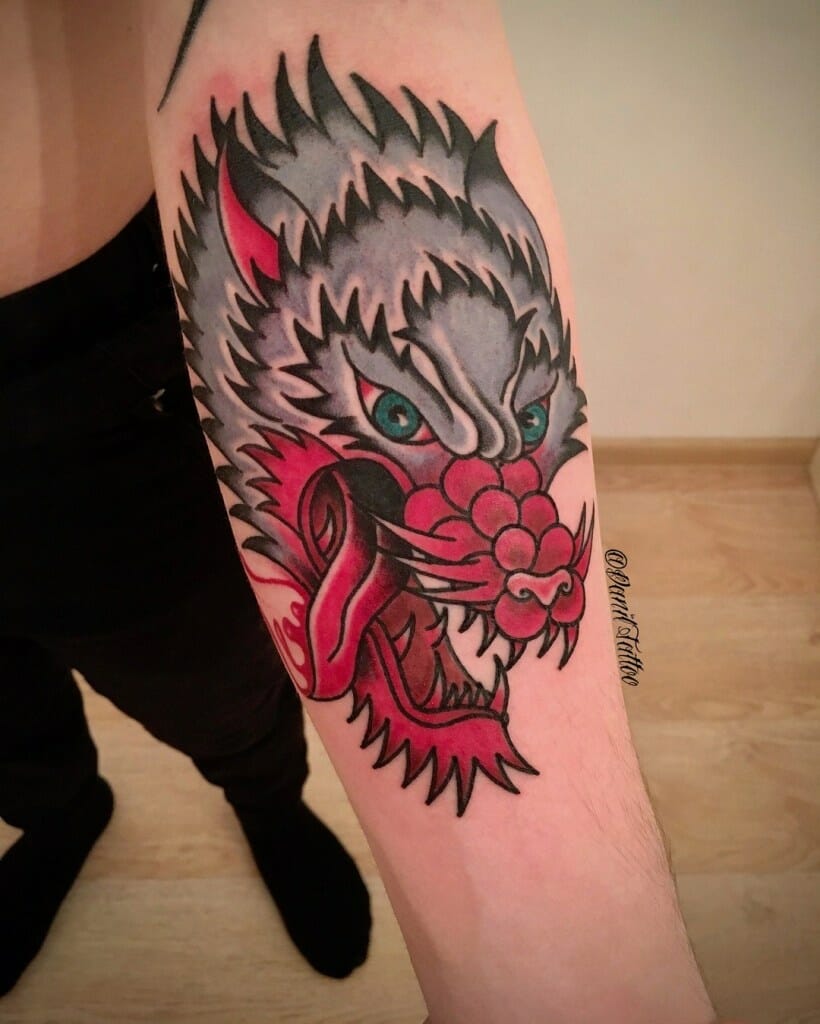
For newcomers to the world of sleeve tattoos, a traditional dragon design can be an excellent starting point. Its relatively small size makes it manageable, and its aesthetic can be seamlessly integrated into a larger sleeve. This piece exemplifies the spirit of old school tattoo designs, merging black ink with vibrant colors.
Half Sleeve Traditional Tattoo
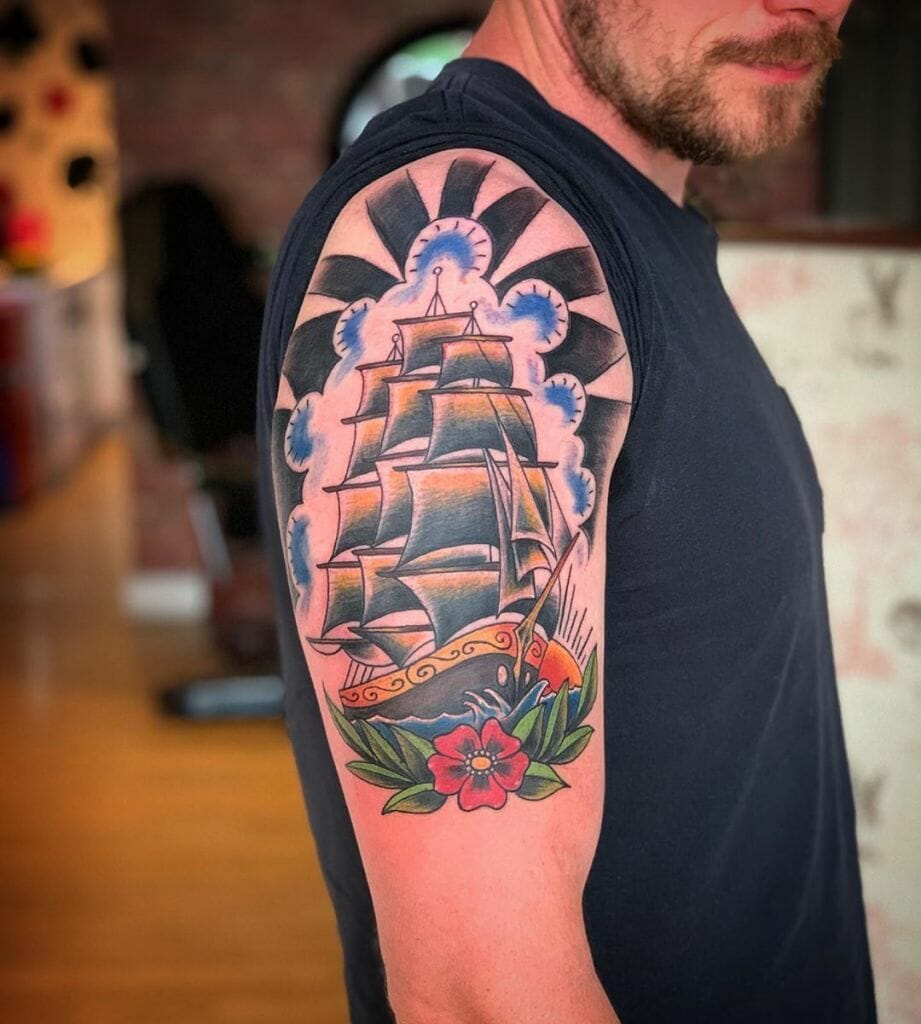
If a full sleeve tattoo seems daunting, a half sleeve presents a more manageable option. It requires less time and pain, with the possibility to expand into a full sleeve later. These traditional designs are characterized by their bold outlines, blending black ink with other colors. Despite their less intricate nature, they still offer an impactful statement, making them an excellent introduction to sleeve tattoos.
Amazing Mermaid Traditional Tattoo Designs
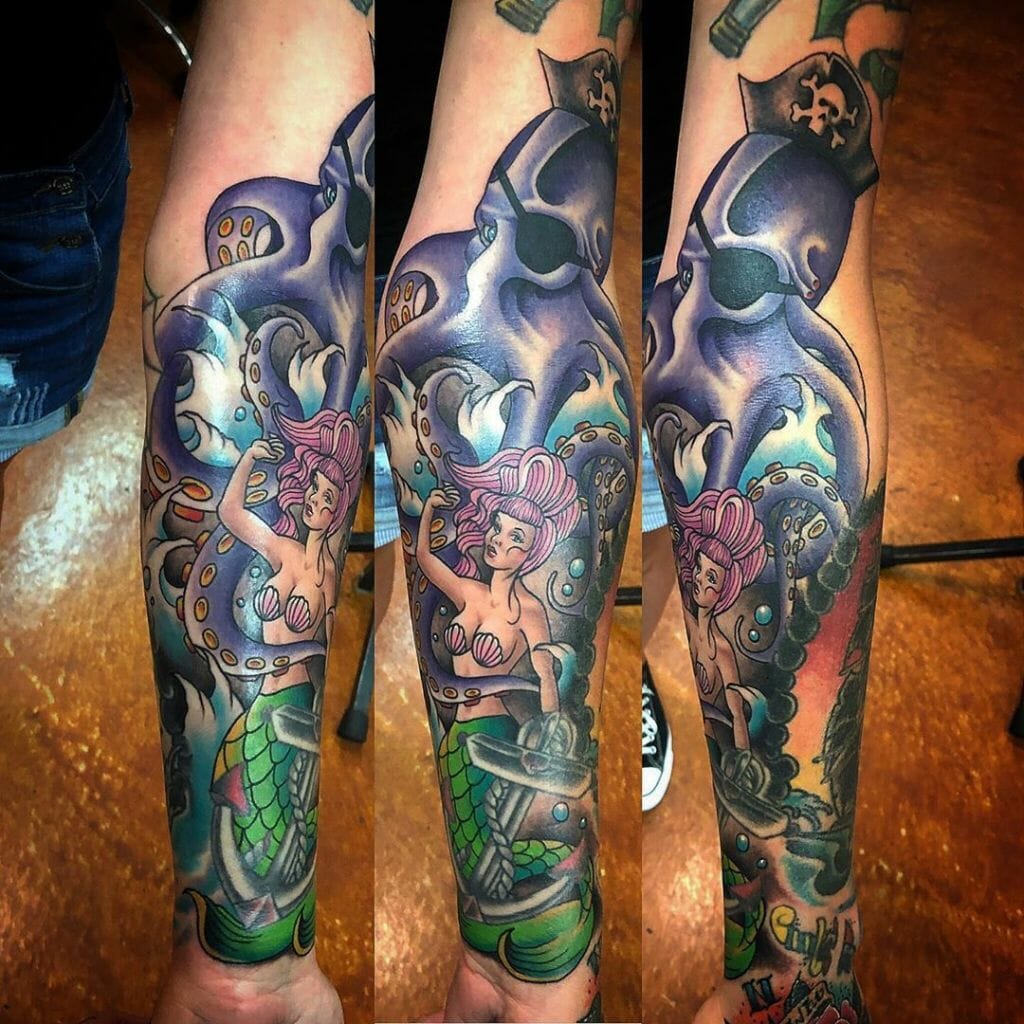
The merger of traditional and sleeve tattoos produces a truly spectacular body art display. The large canvas provided by sleeve tattoos allows for more intricate designs, perfectly suited to the detail-oriented nature of traditional tattoos. Be prepared for a lengthy process to achieve these ornate pieces, which can take hours or even weeks of detailed work.
All Black Ink Traditional Tattoo
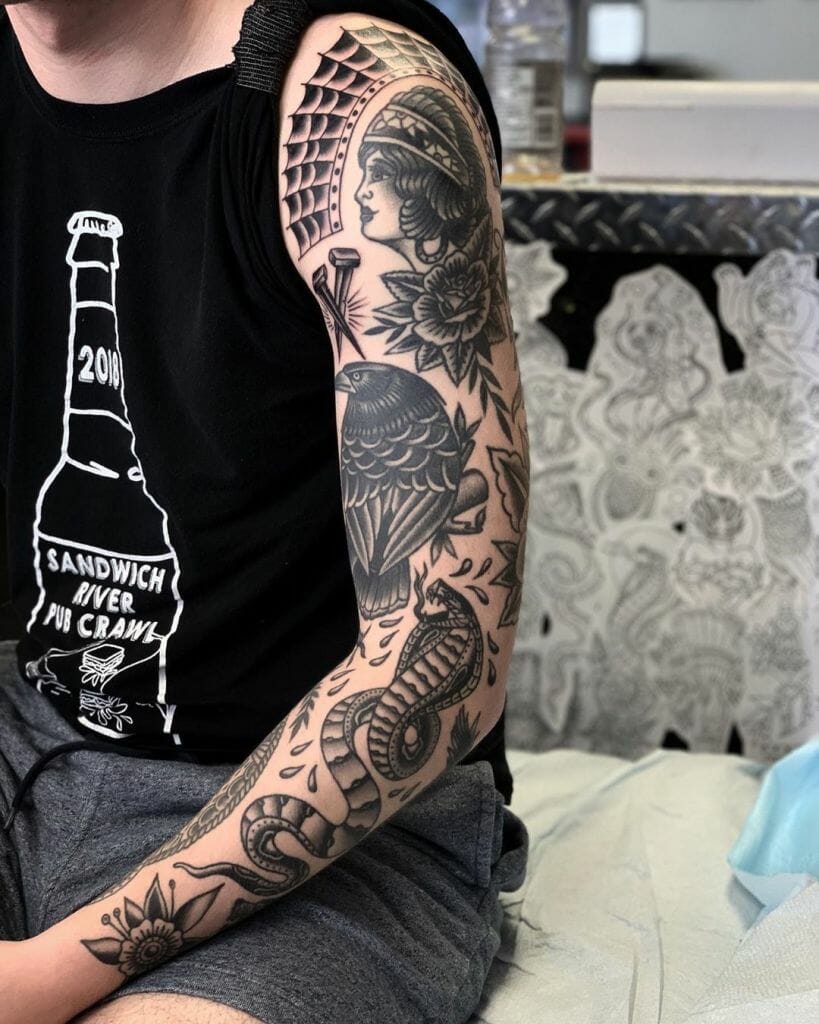
While traditional tattoos often incorporate a spectrum of colors, black ink designs carry their own distinctive appeal. These designs retain all the characteristic elements of traditional tattooing while offering a simpler, more subdued aesthetic. For those seeking a less vibrant but equally expressive traditional tattoo, an all-black design can be a perfect choice.
Need More Inspiration
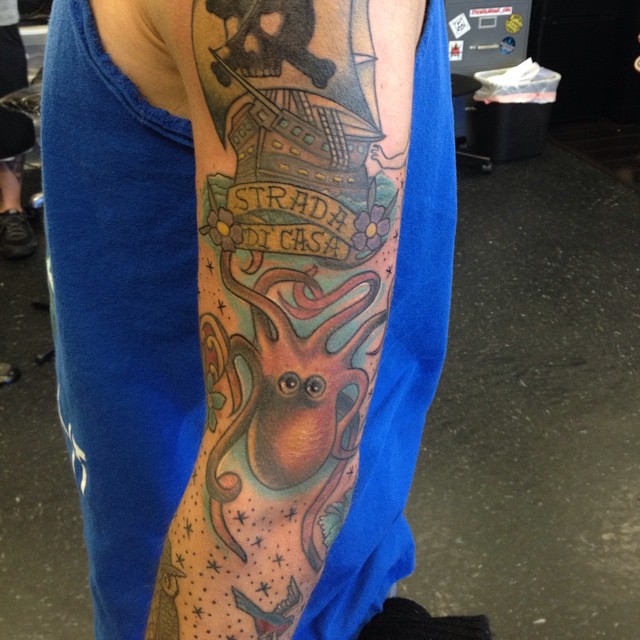
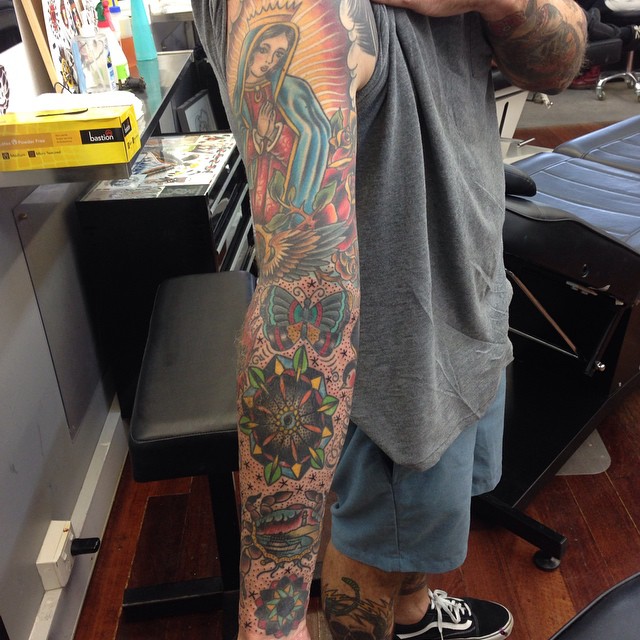
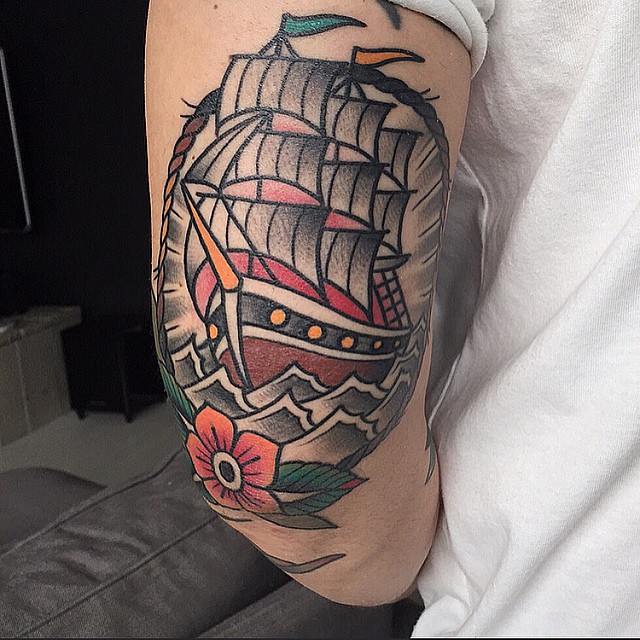
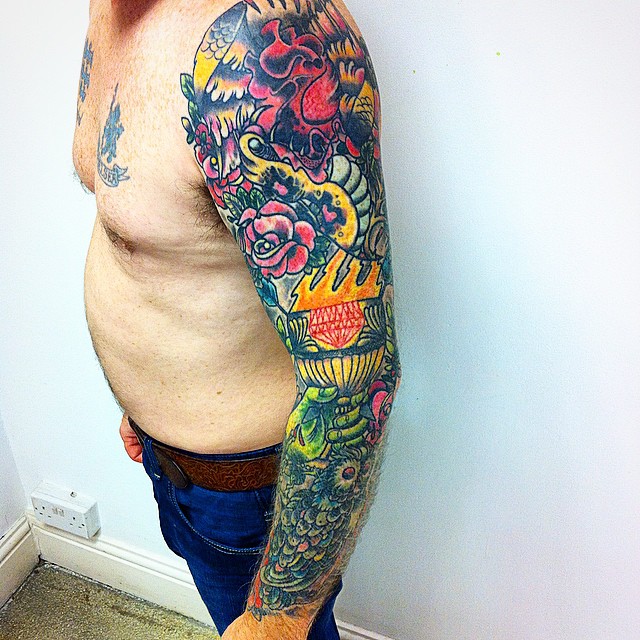
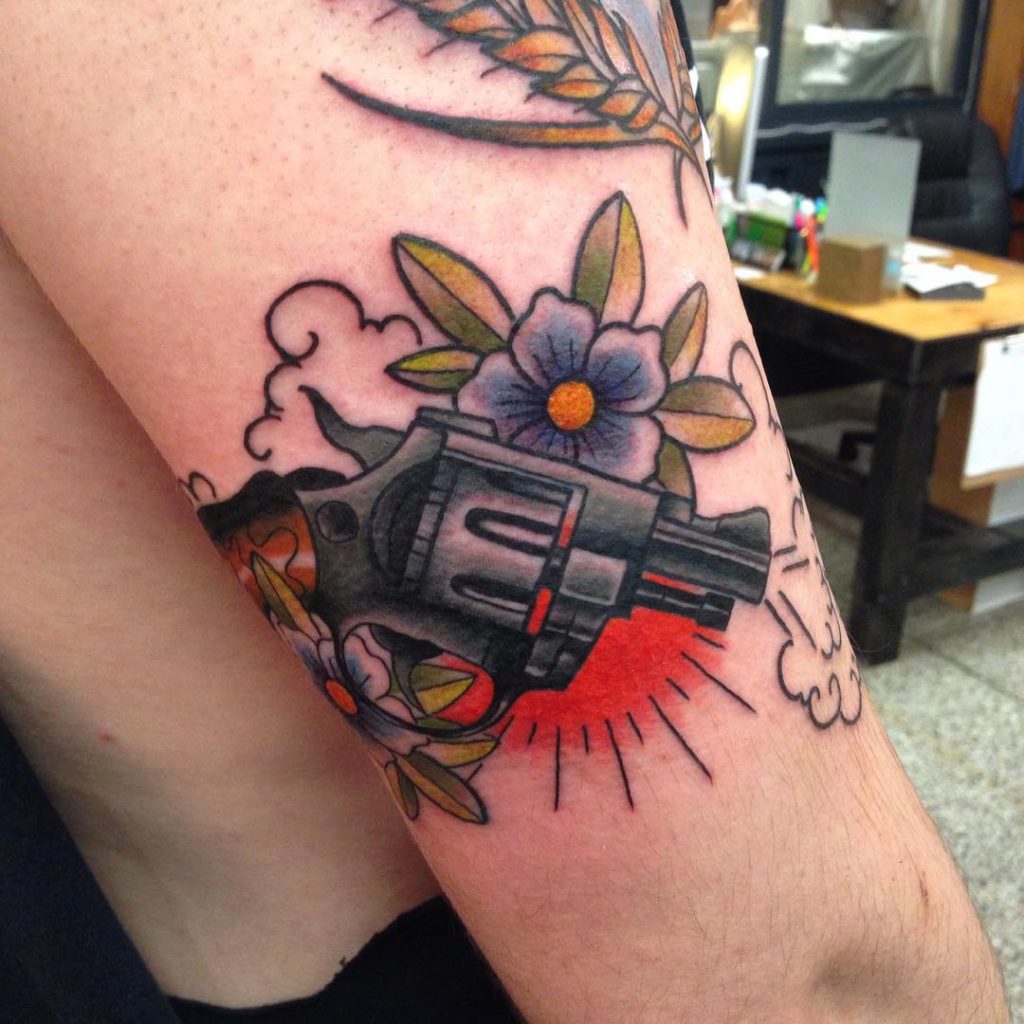
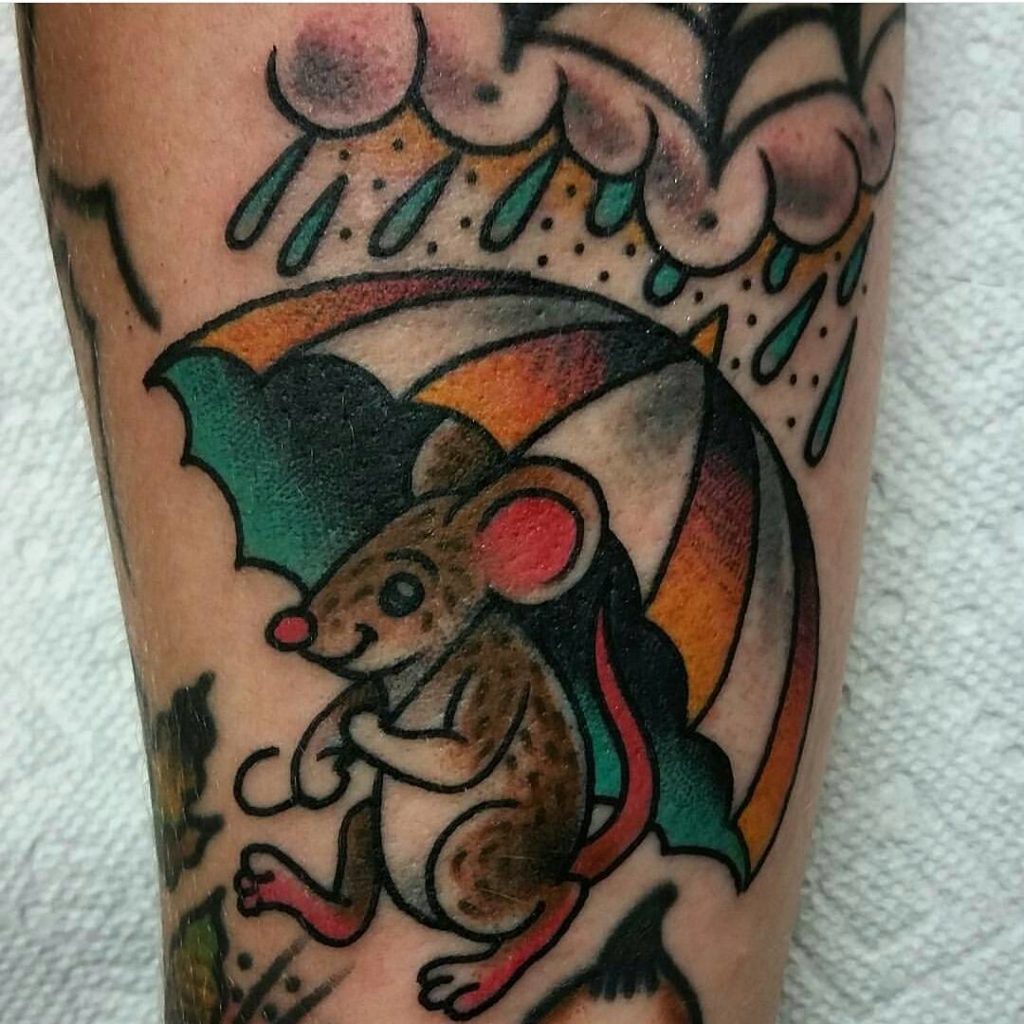
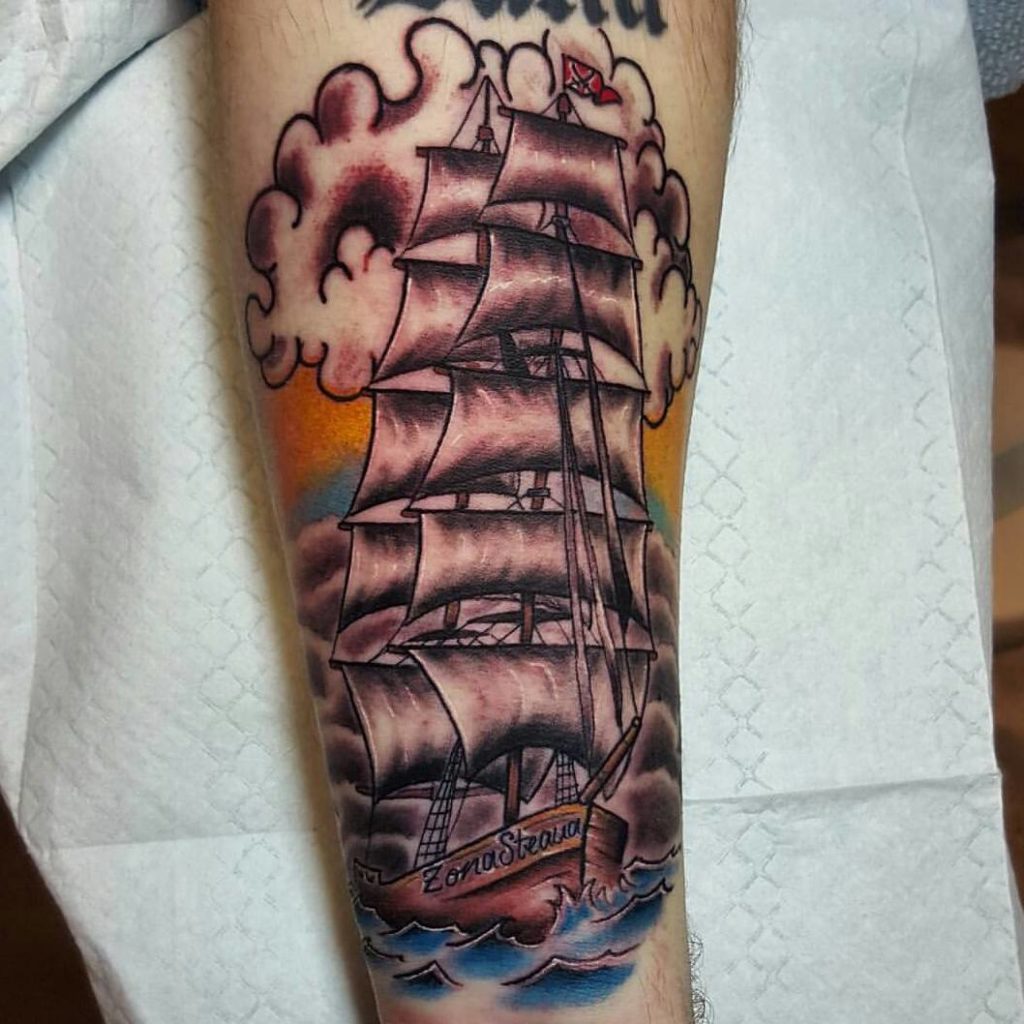
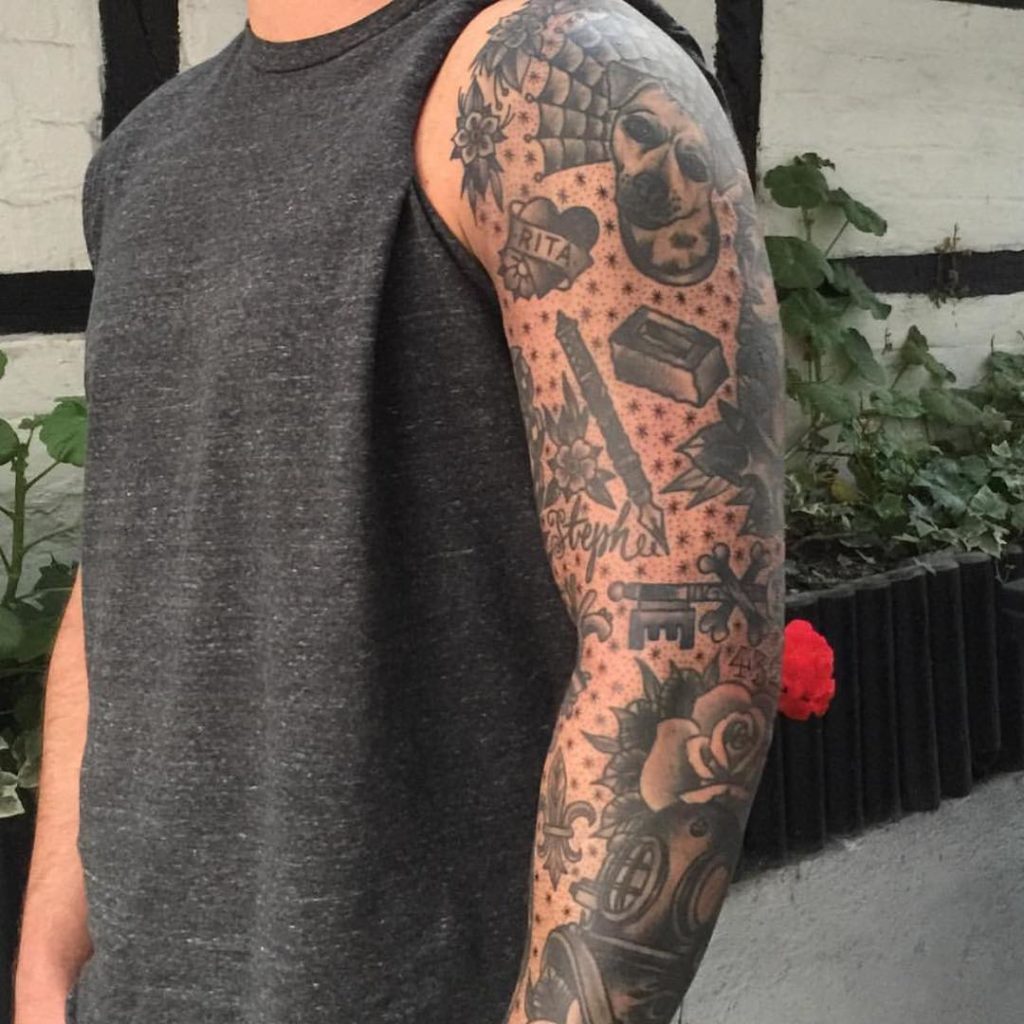
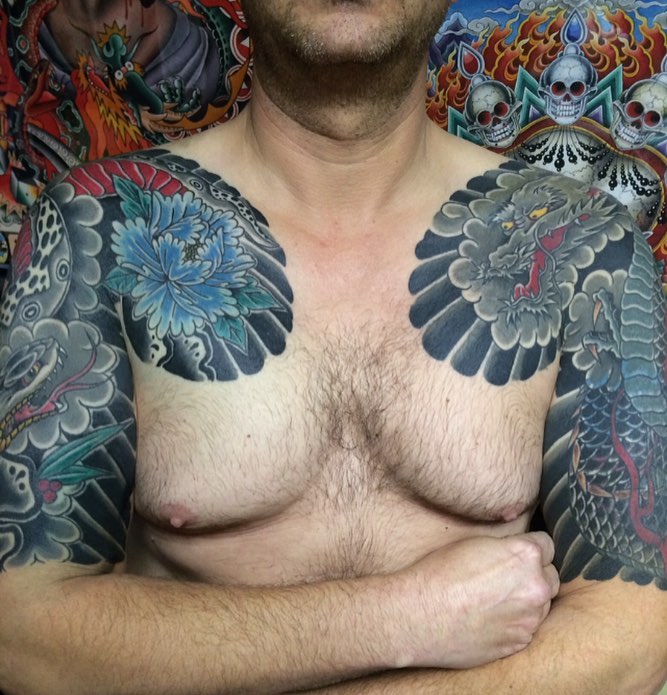
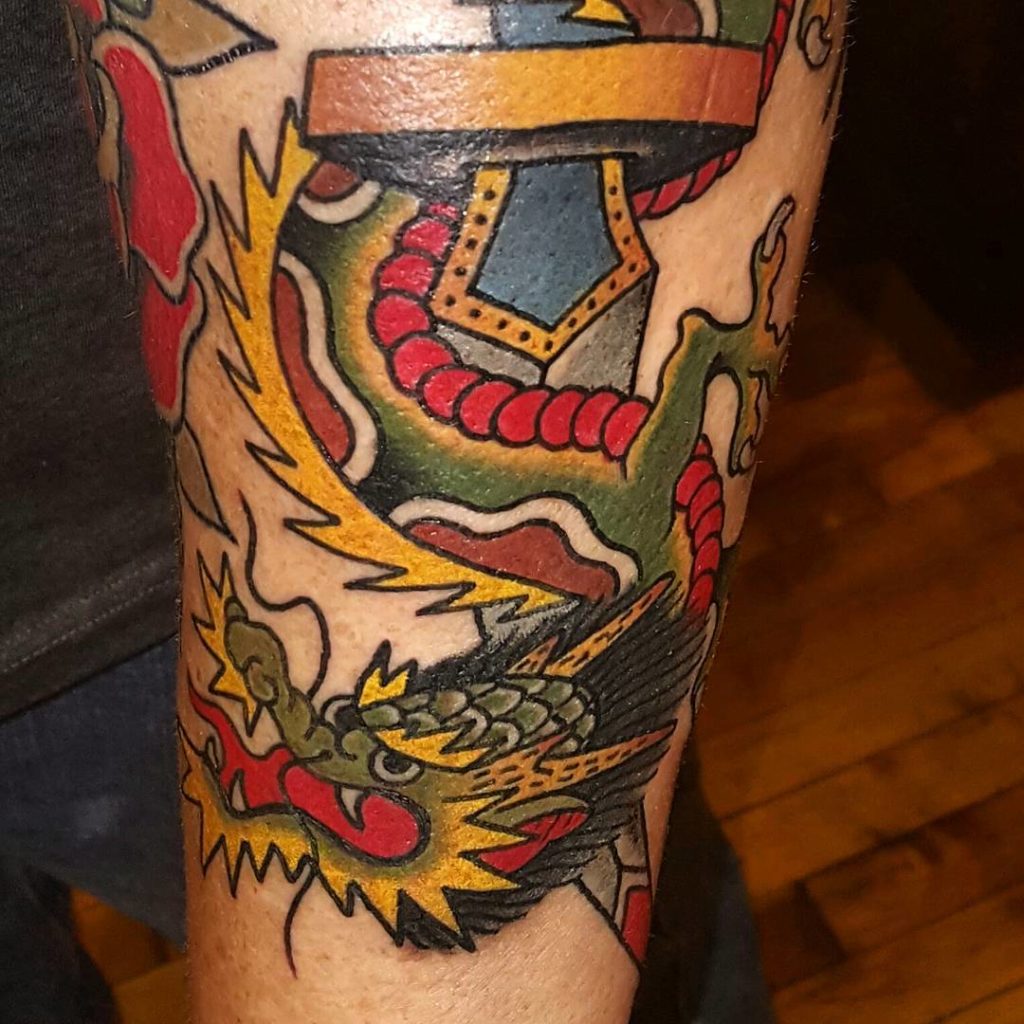
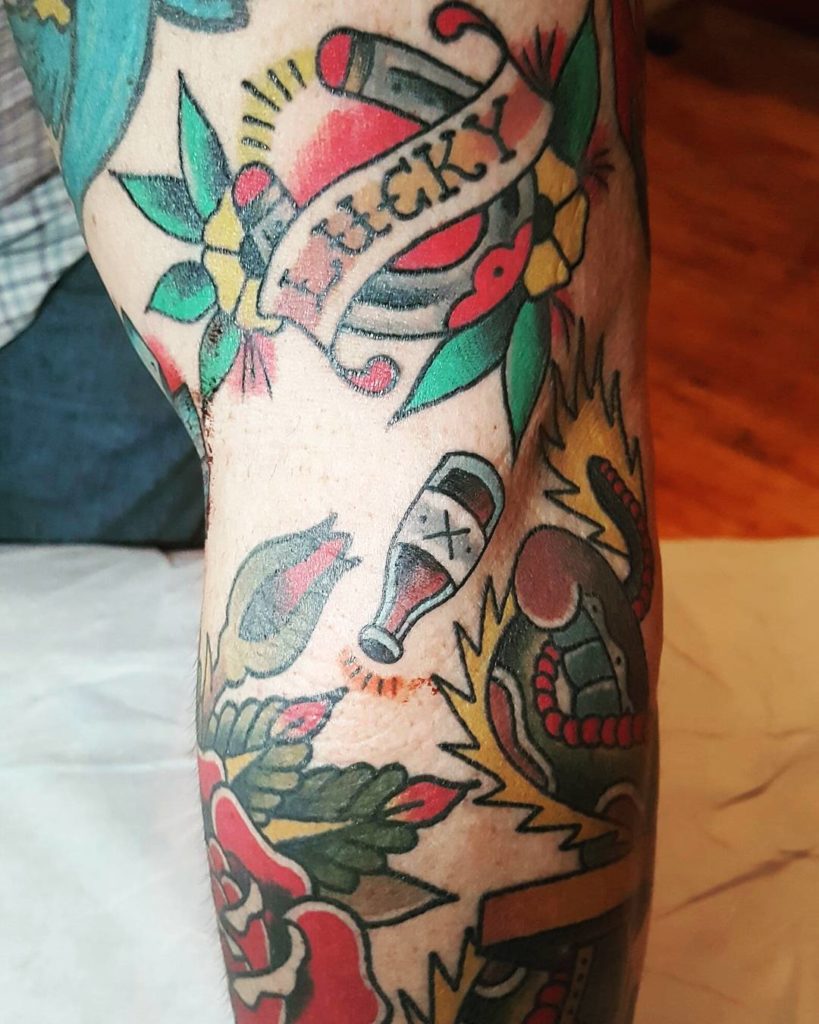
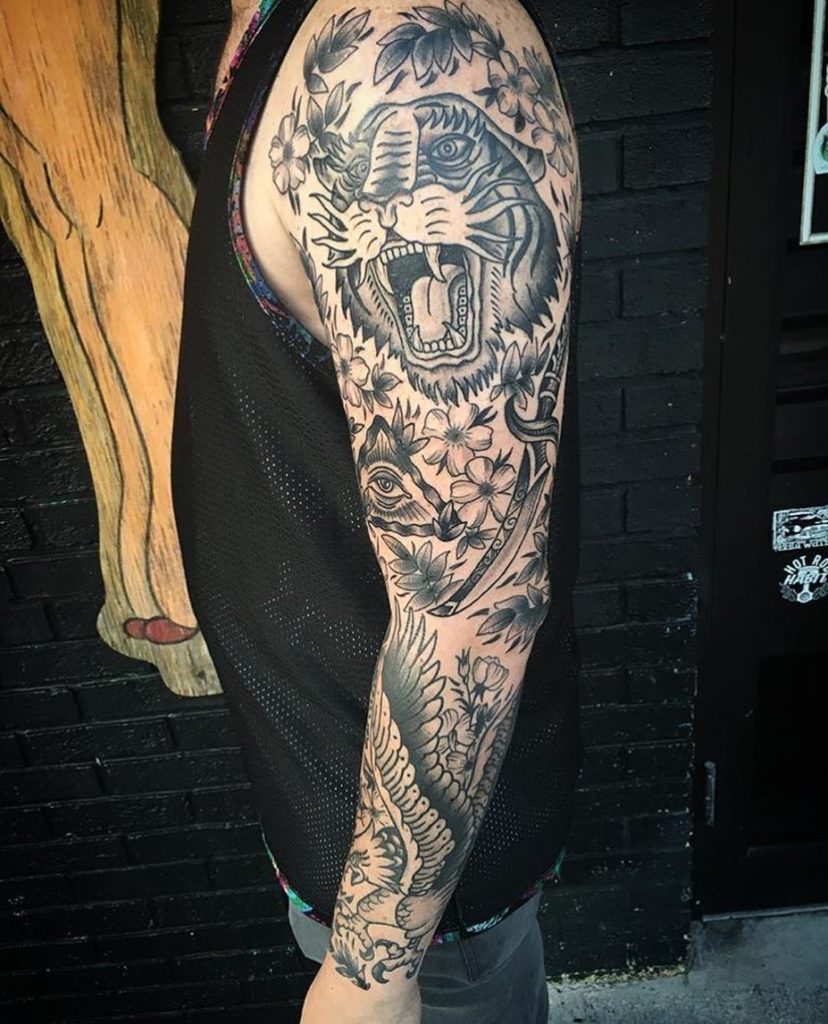
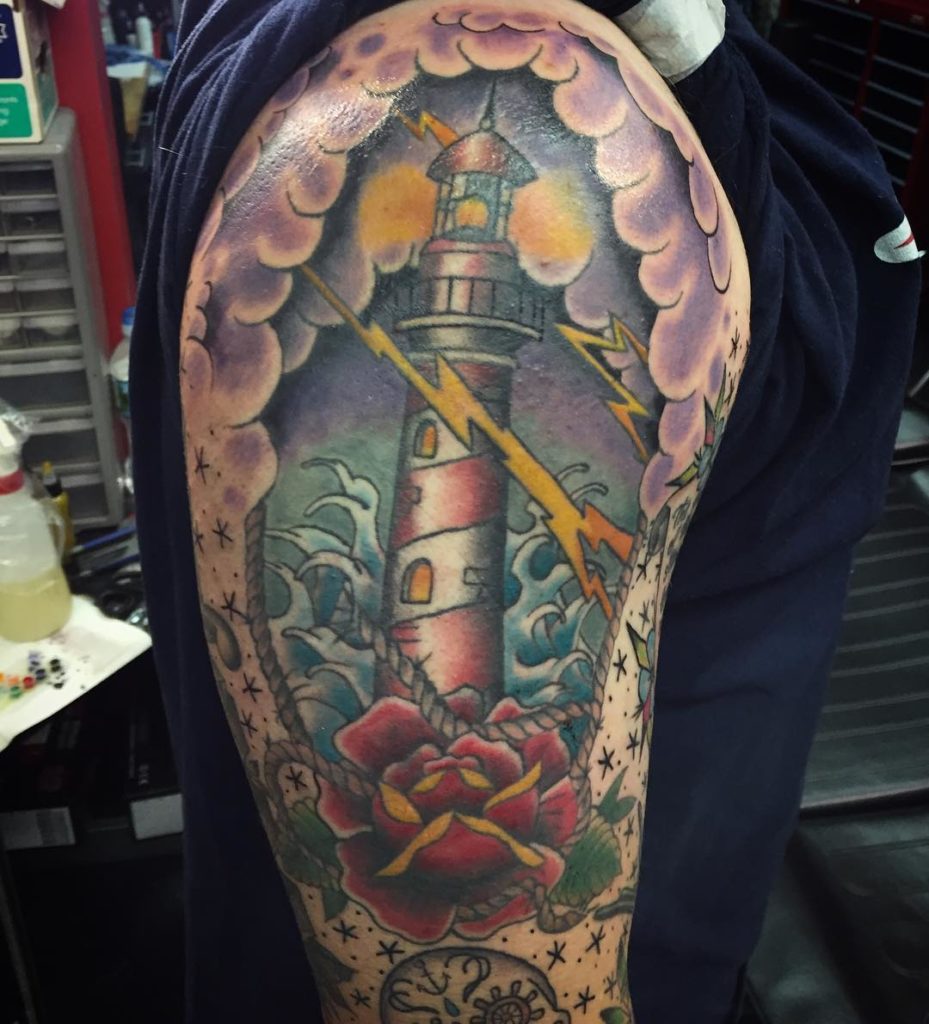
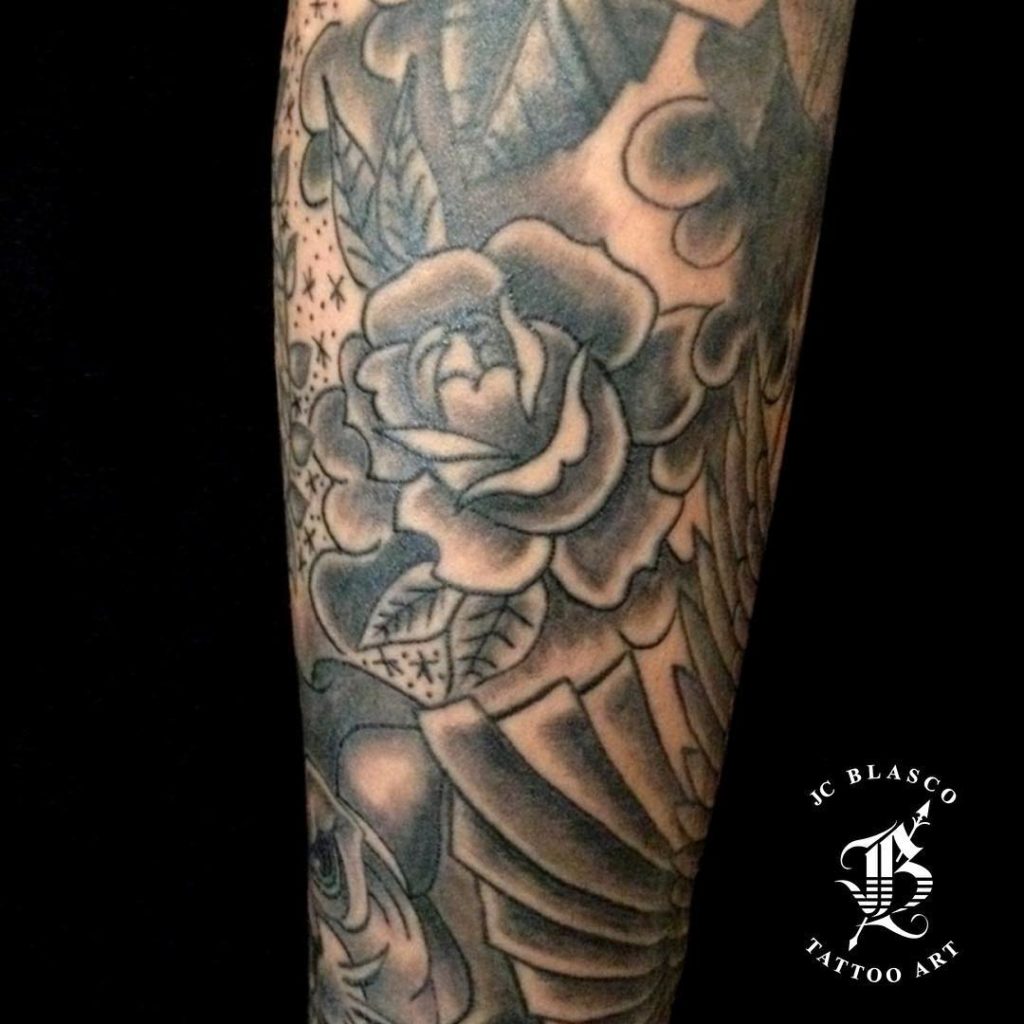
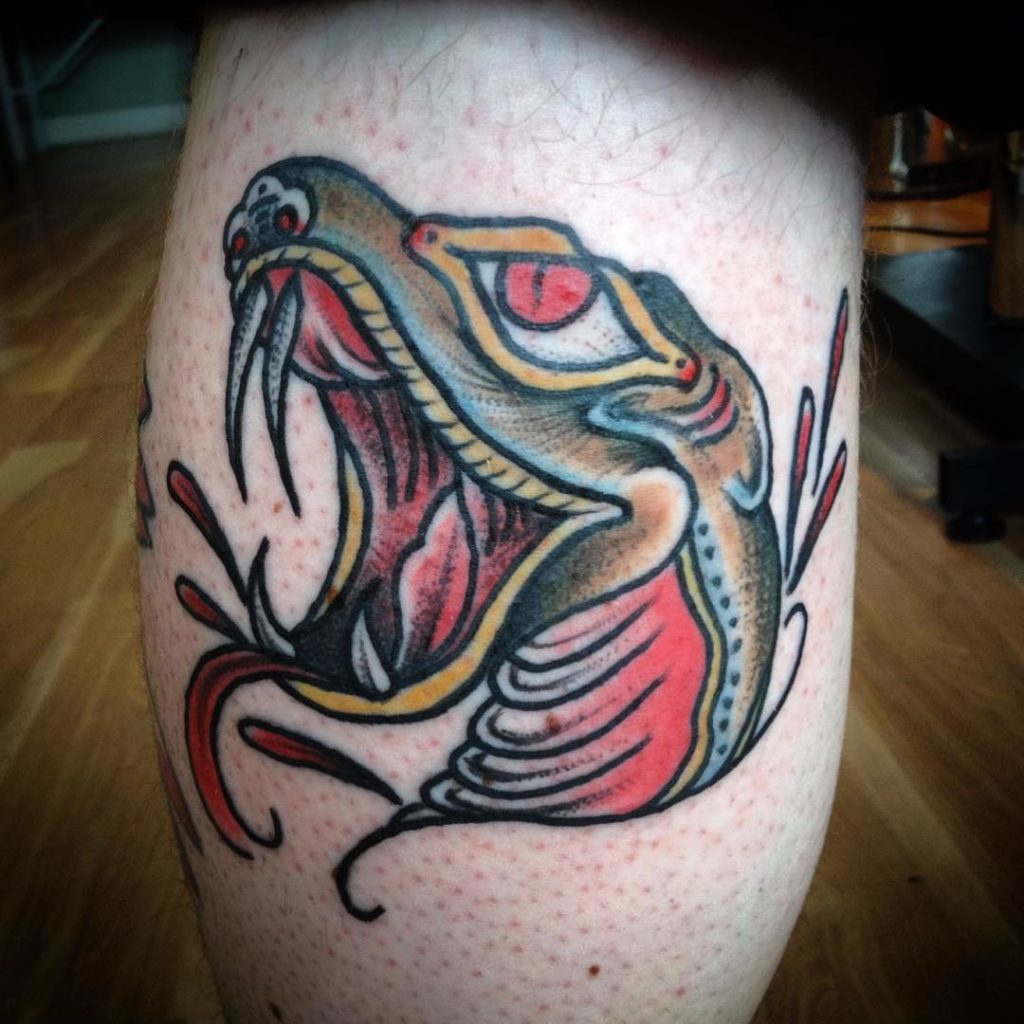
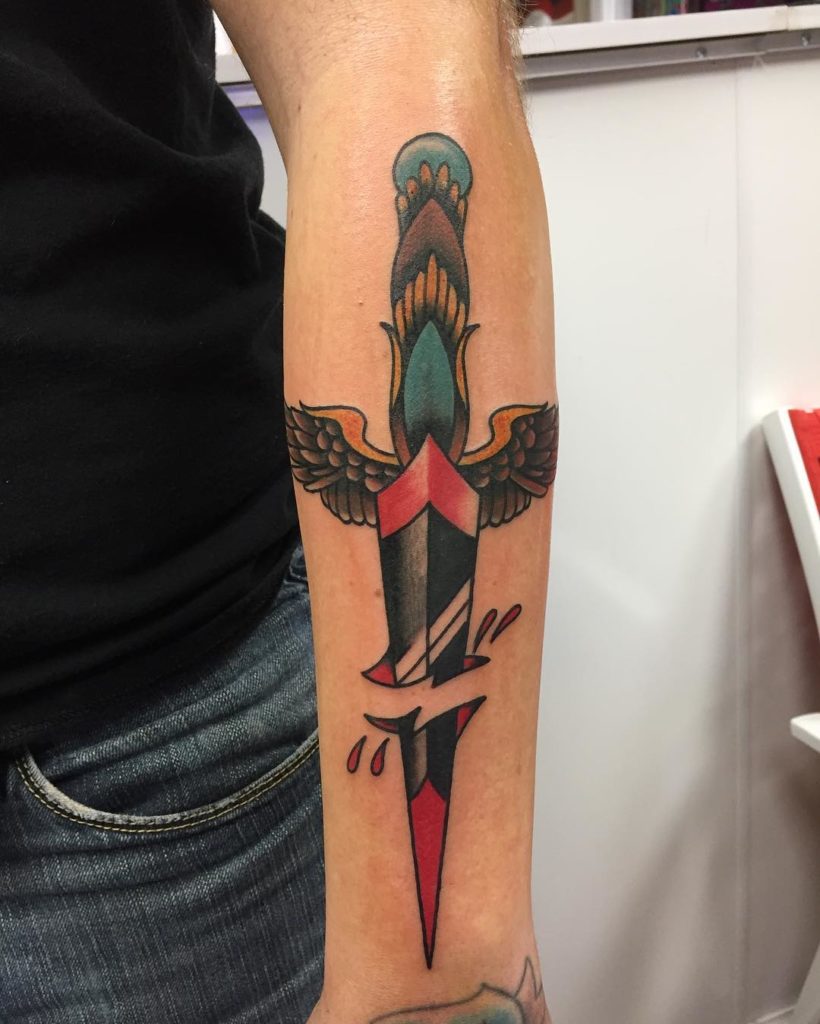
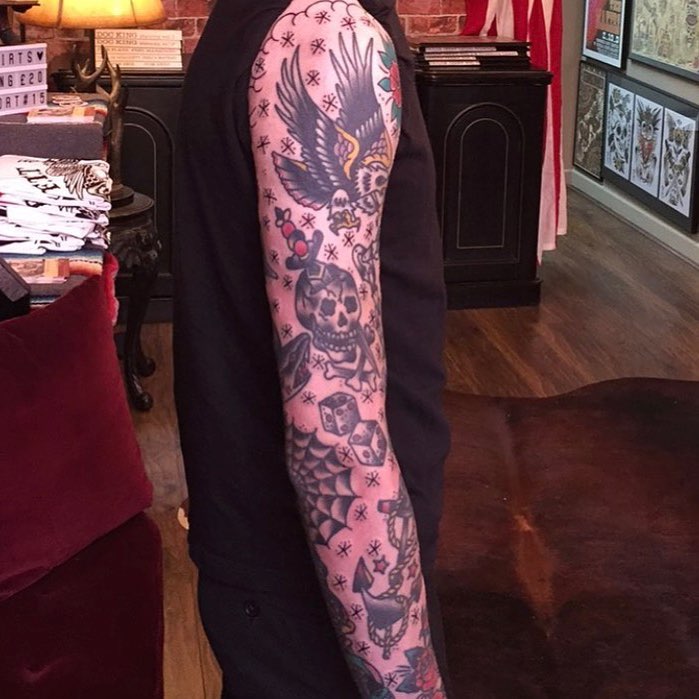
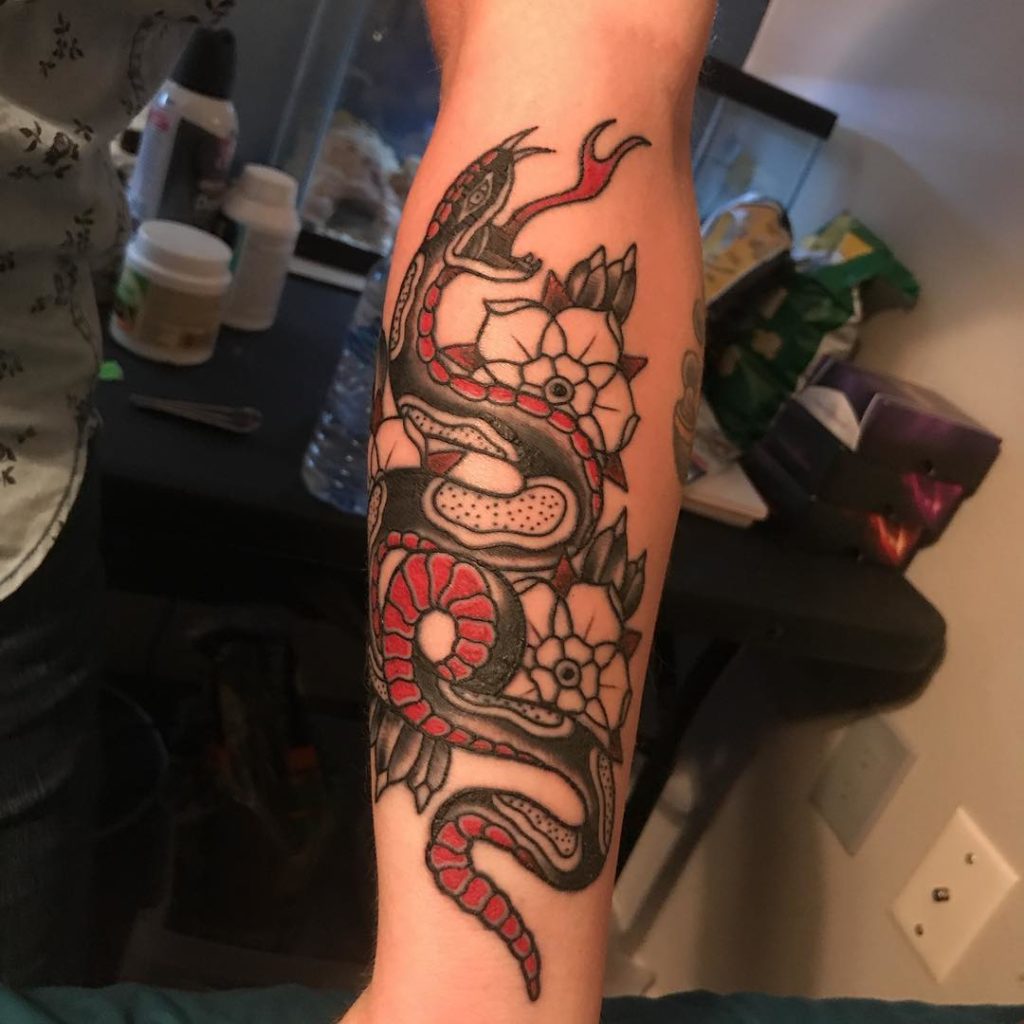
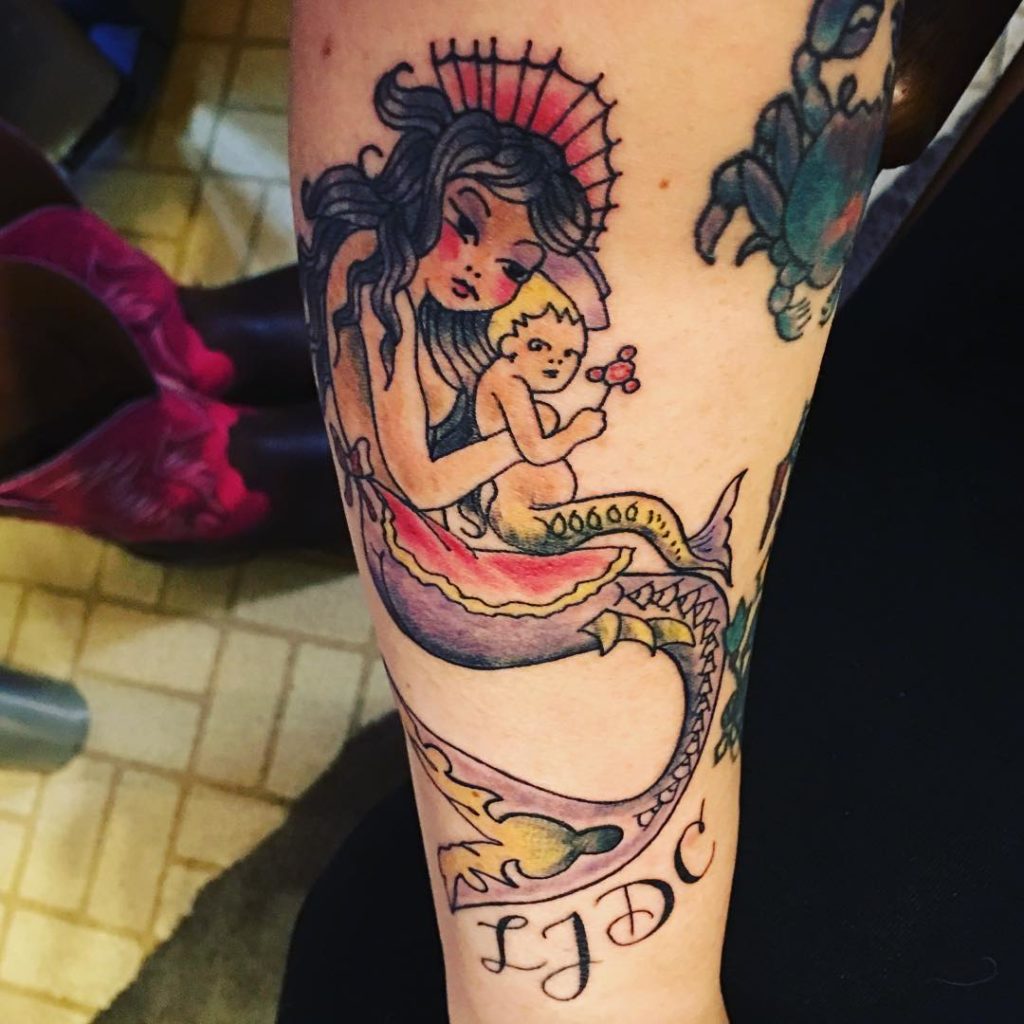
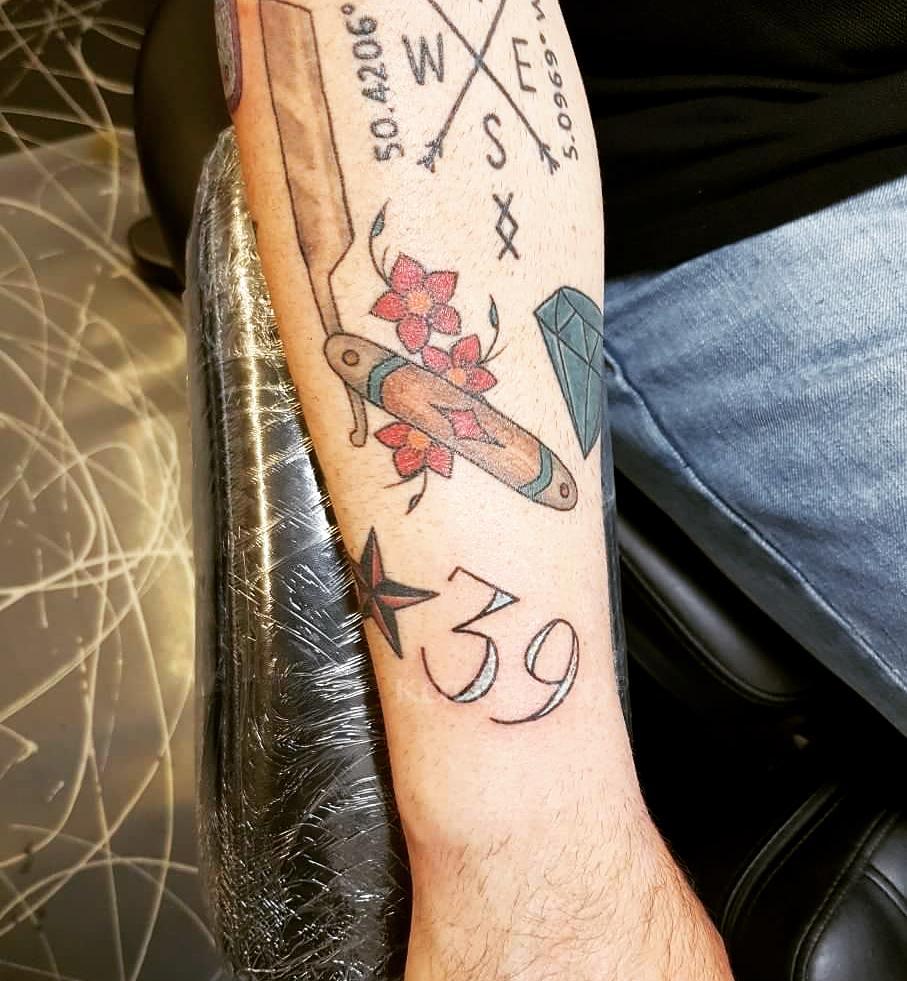
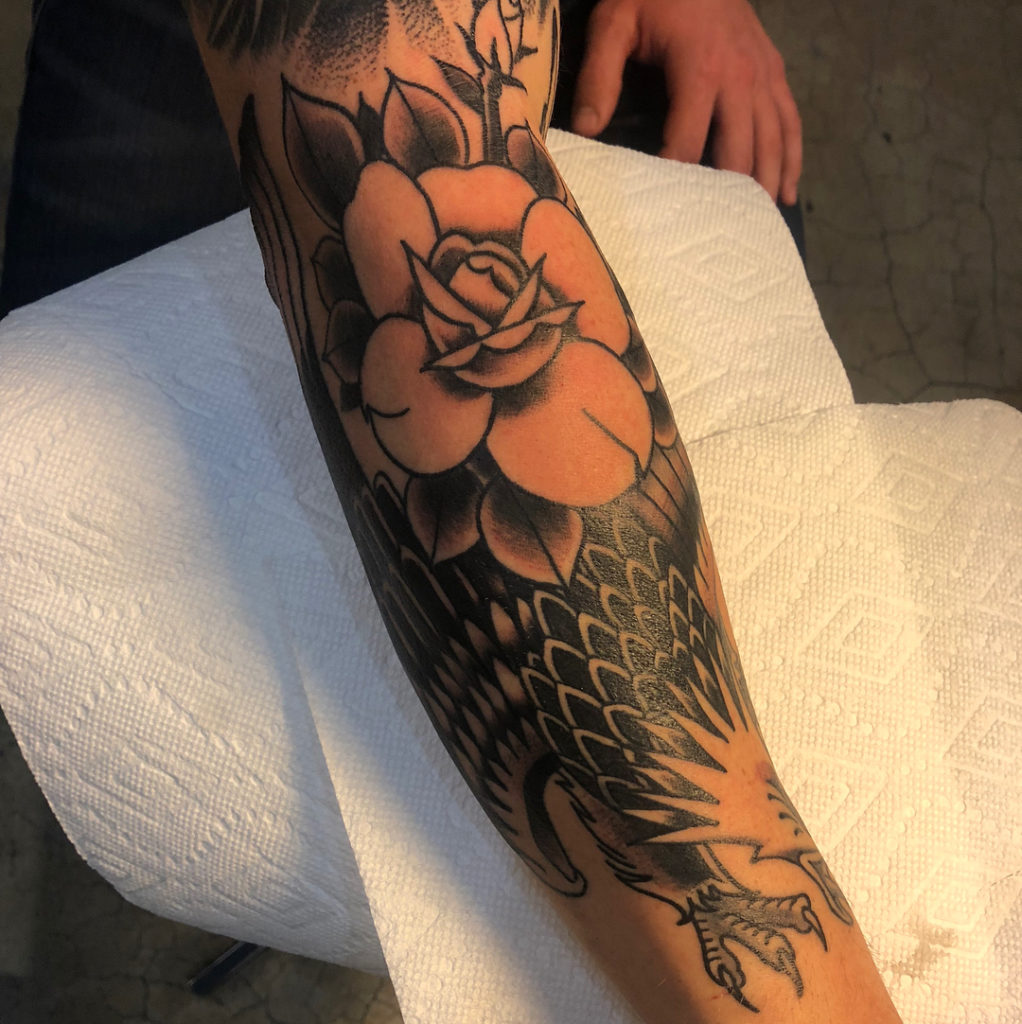
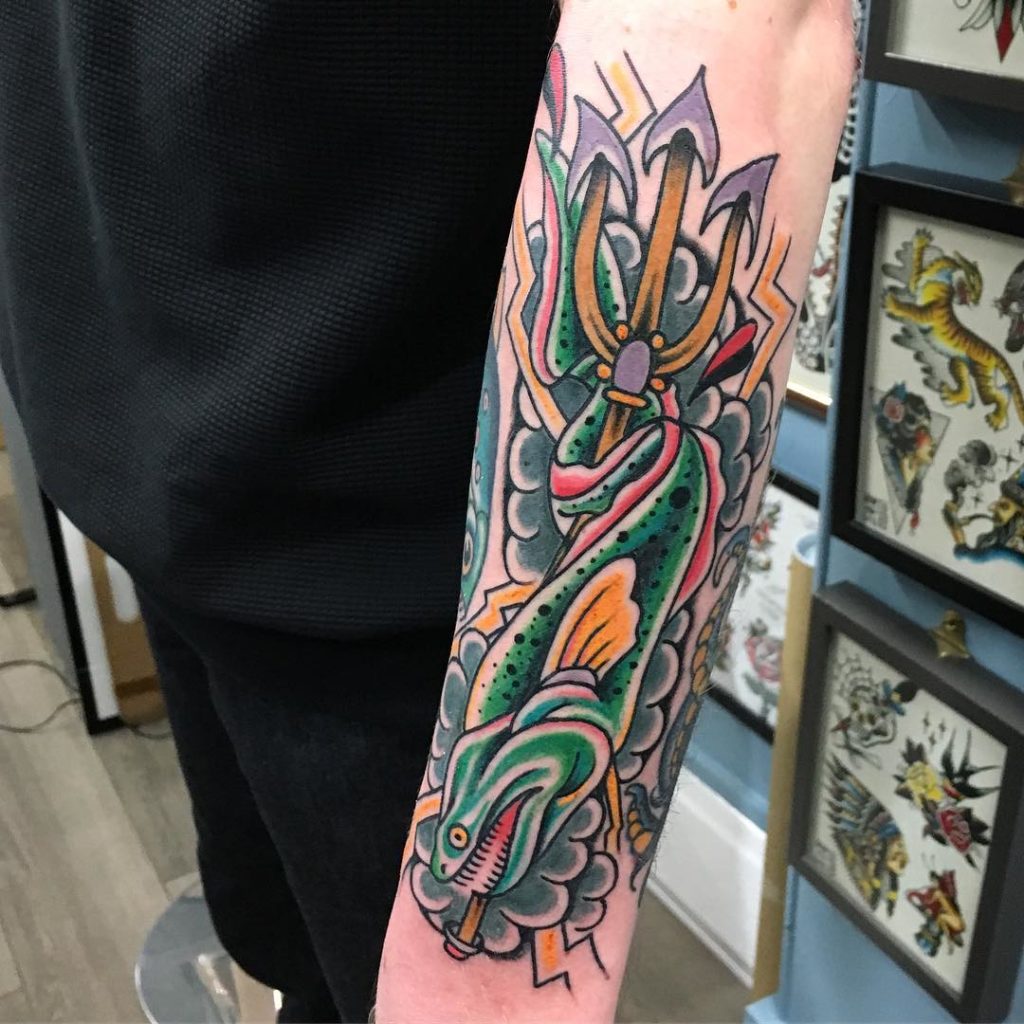
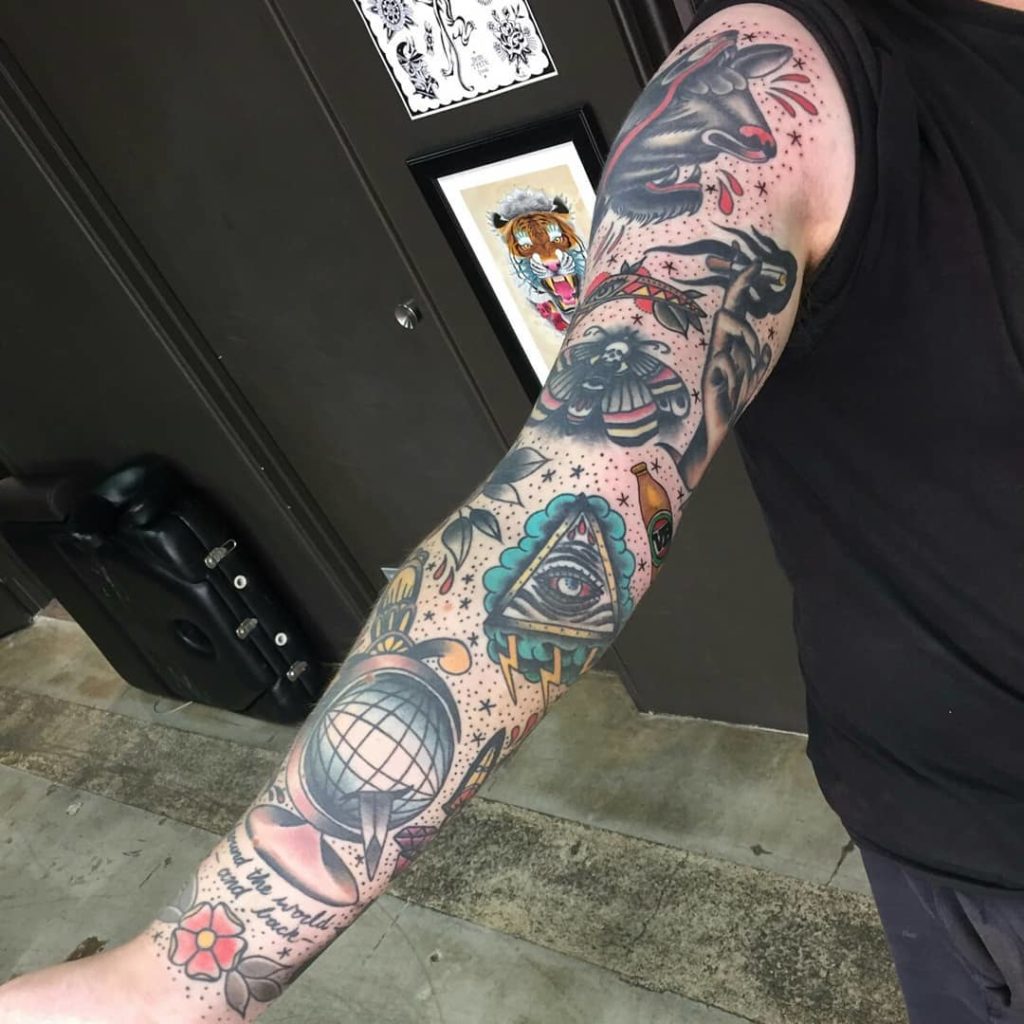
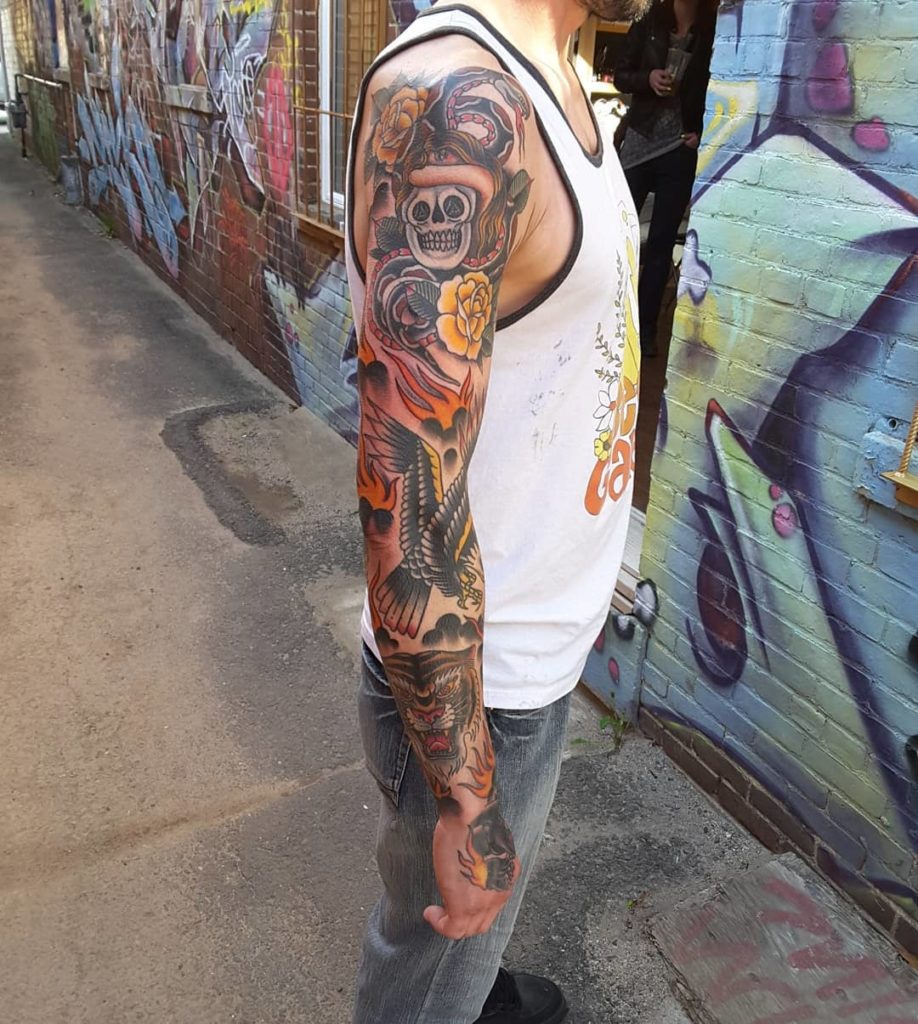
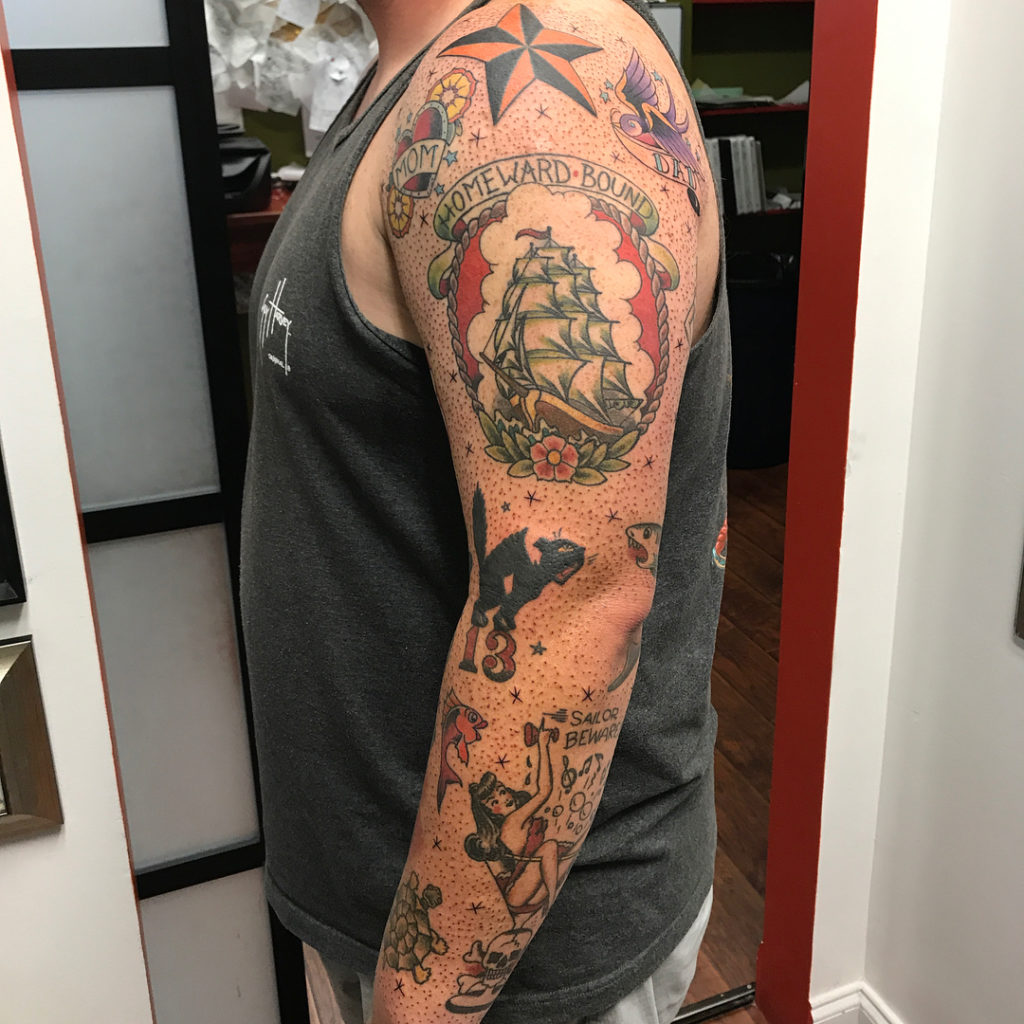
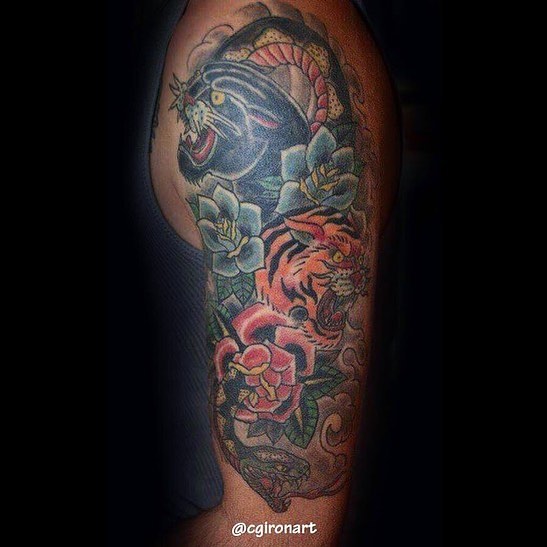
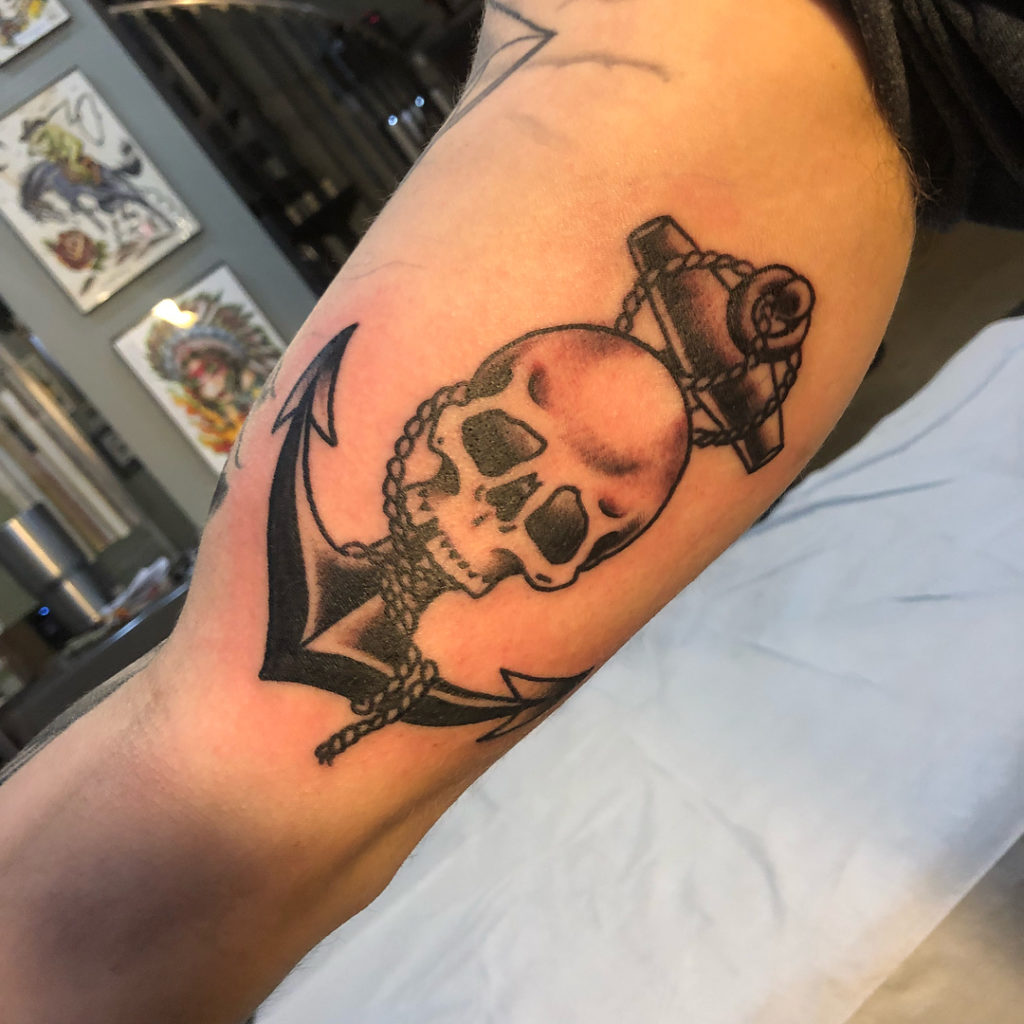
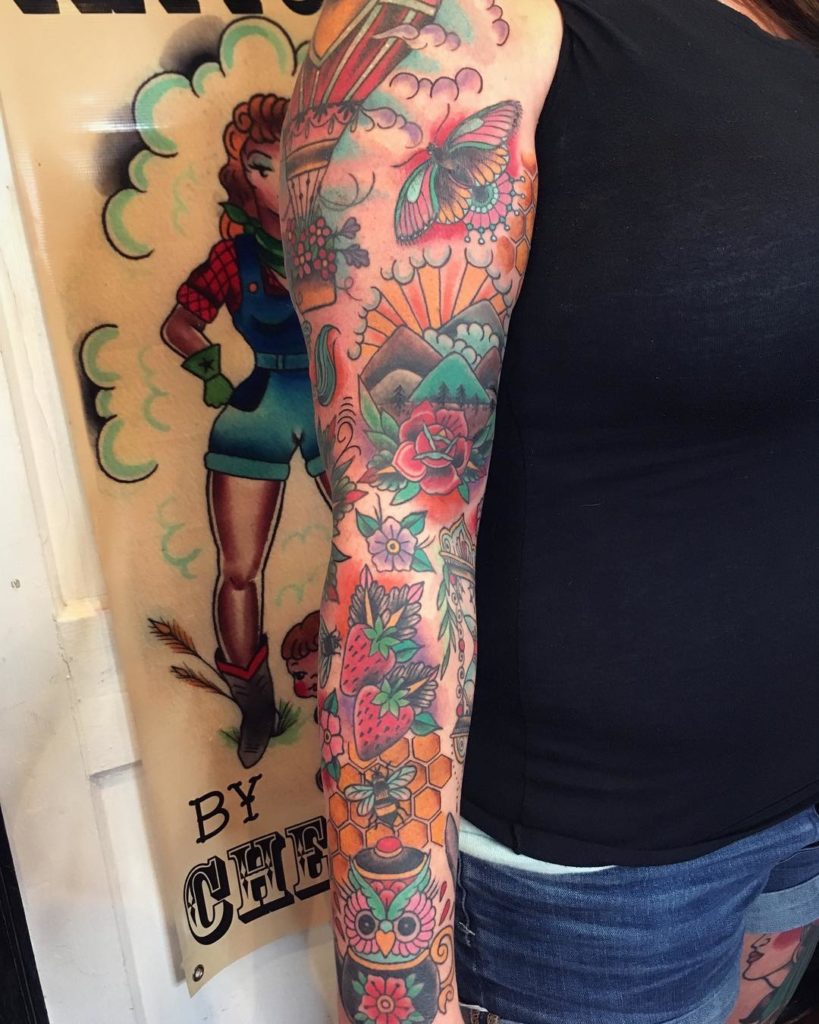
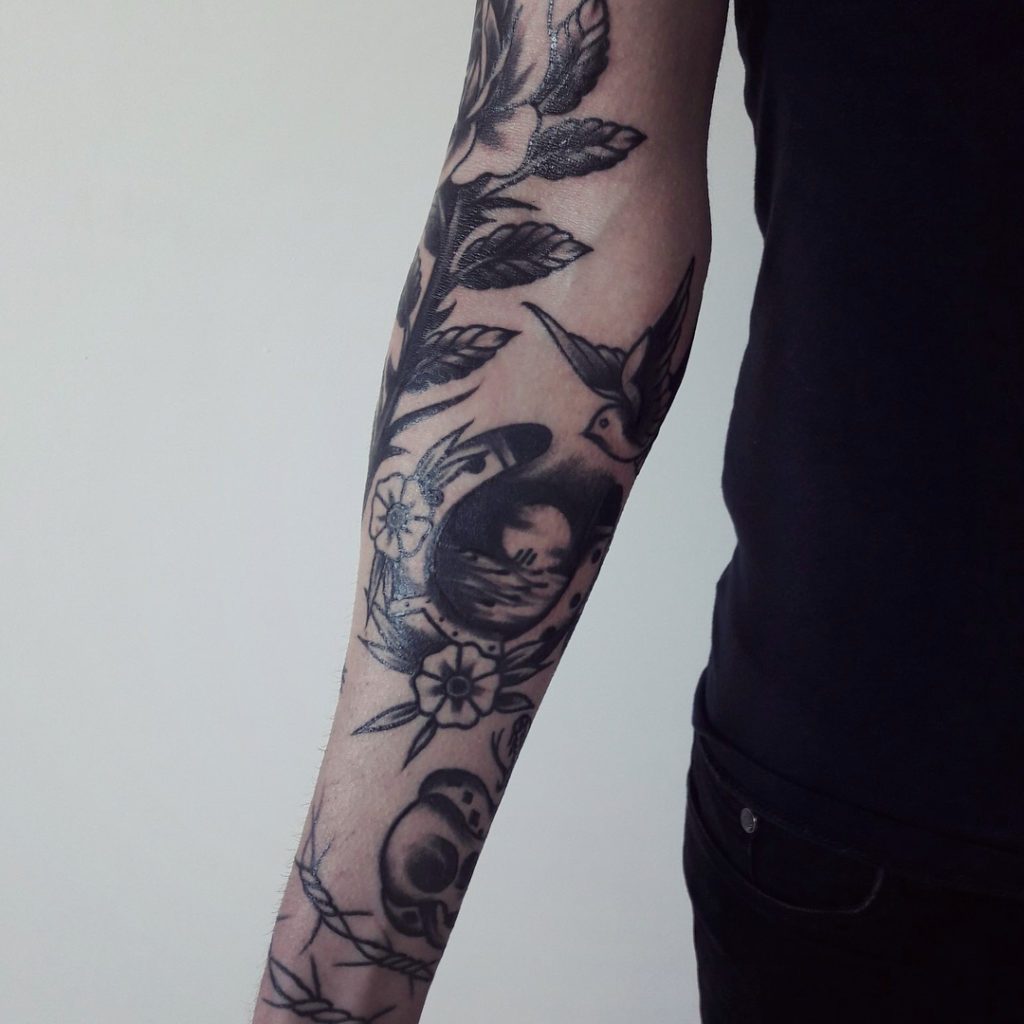
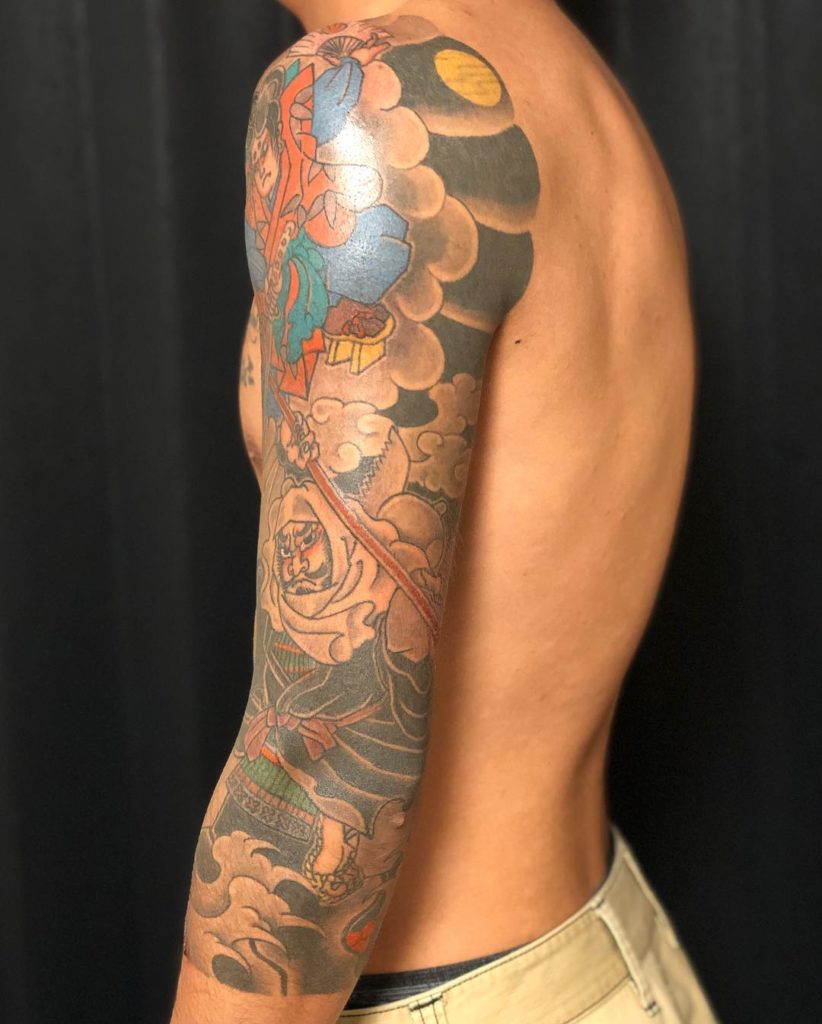
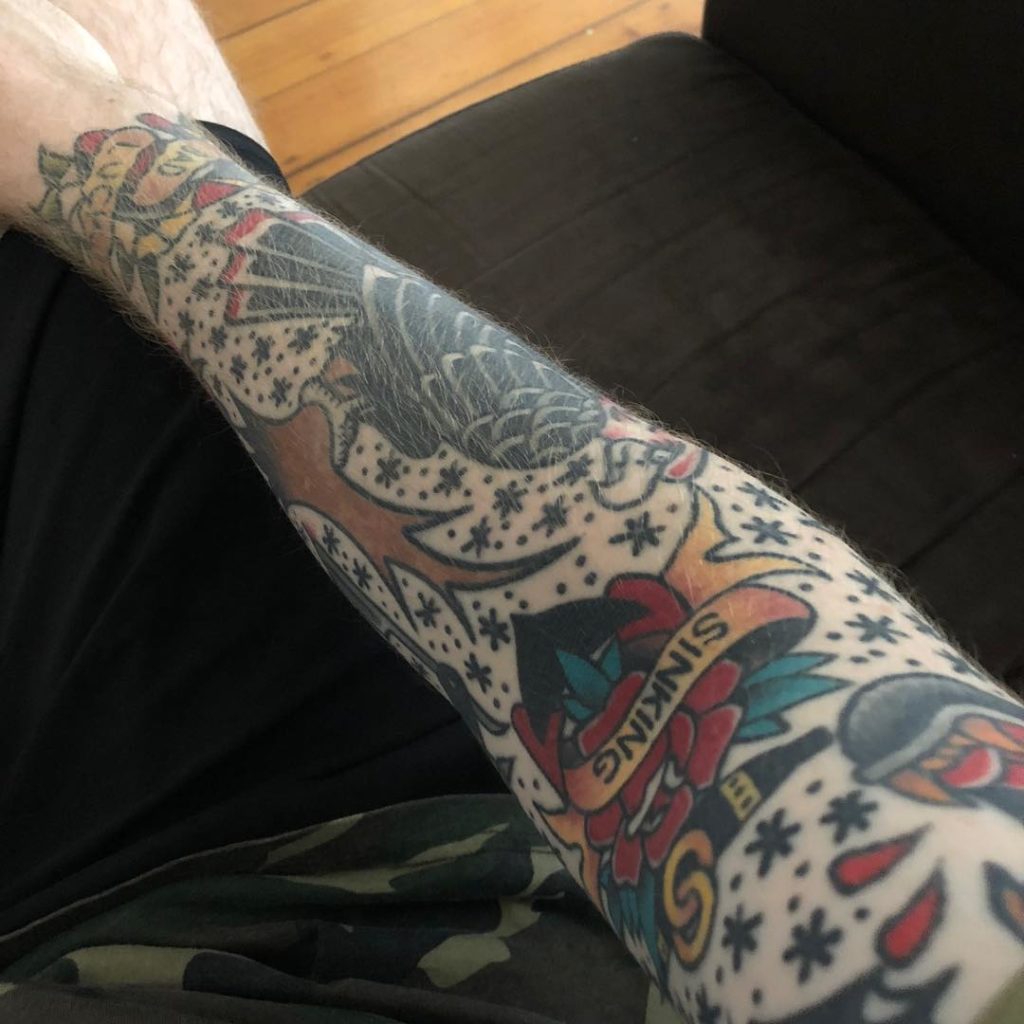
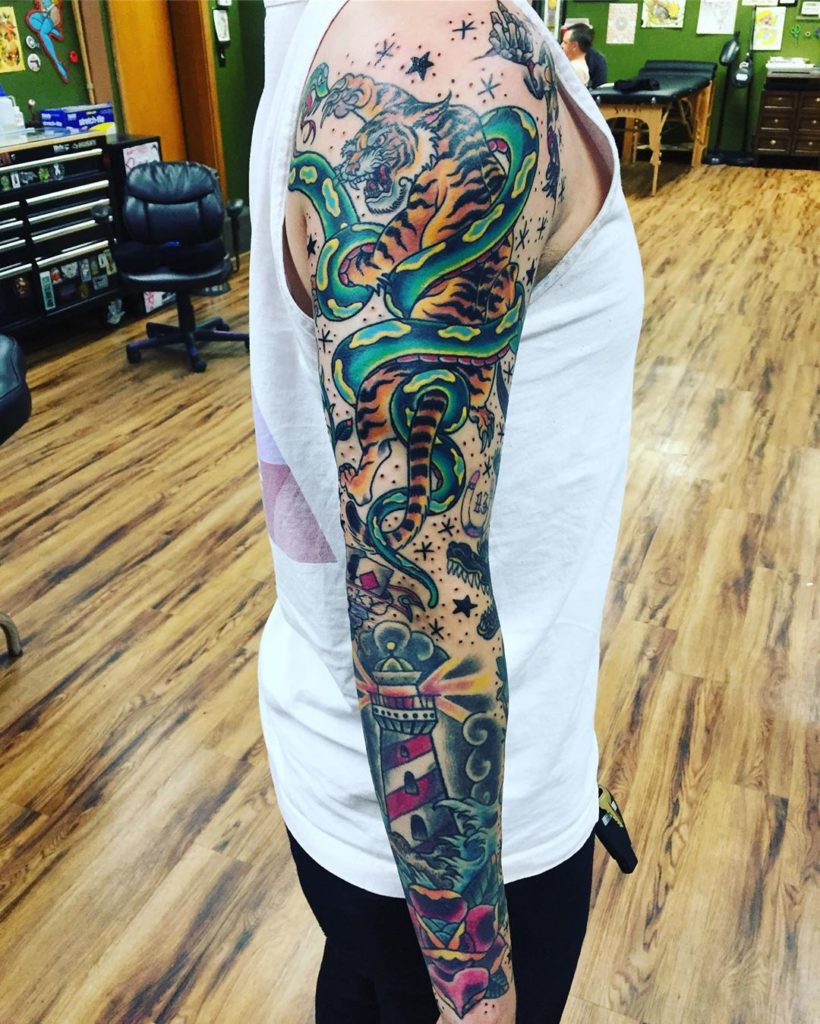
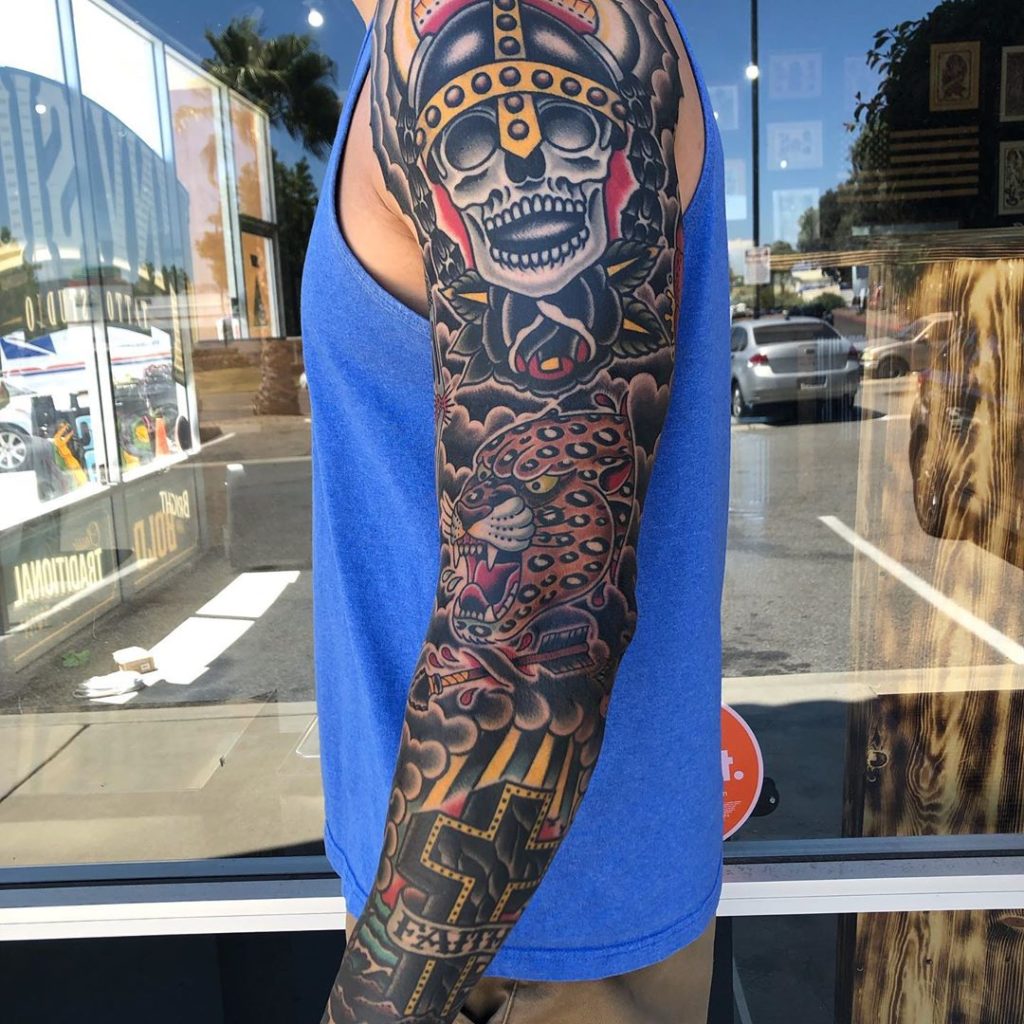
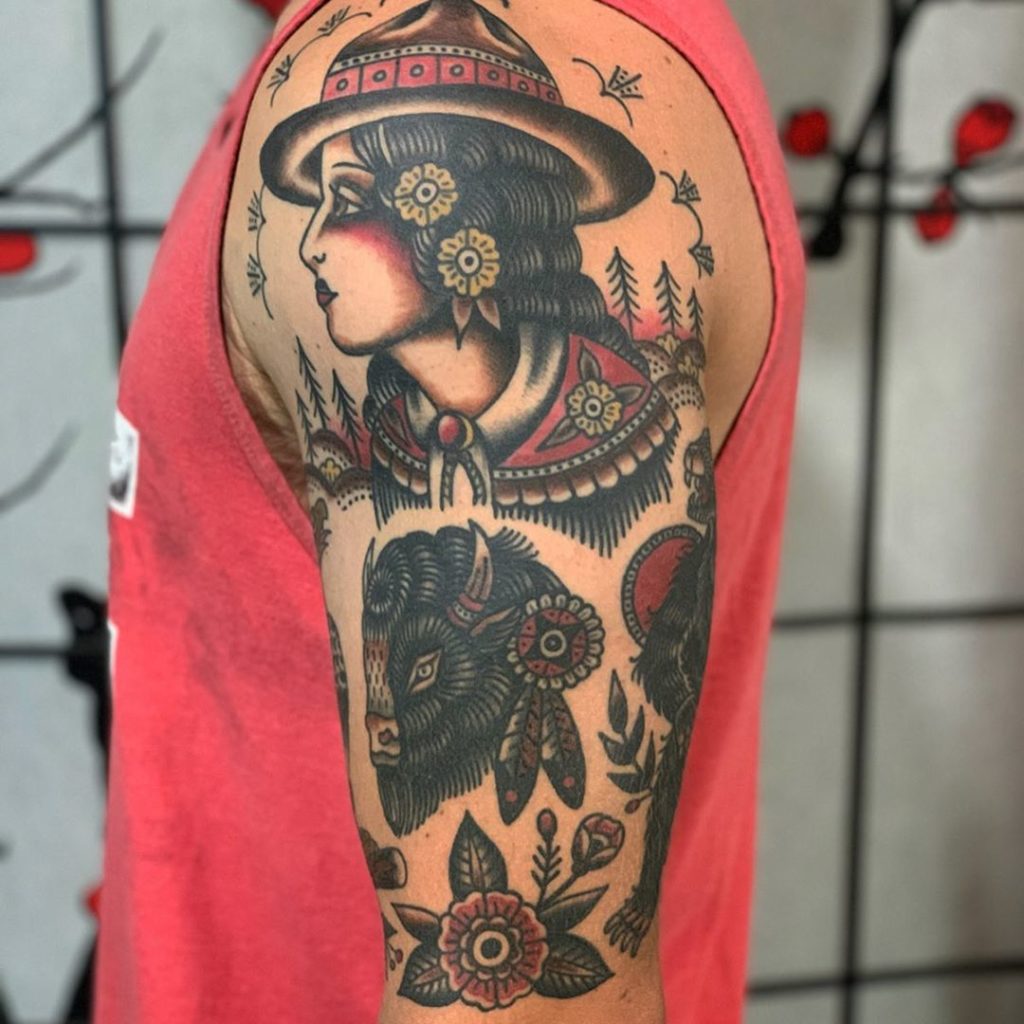
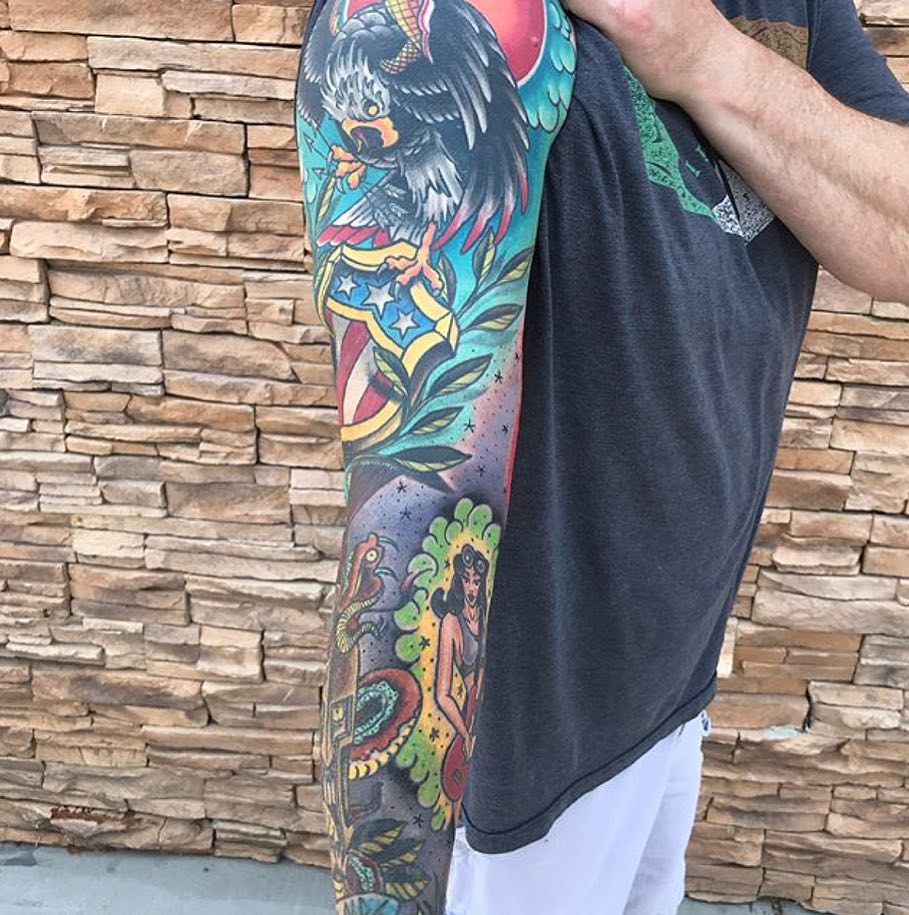
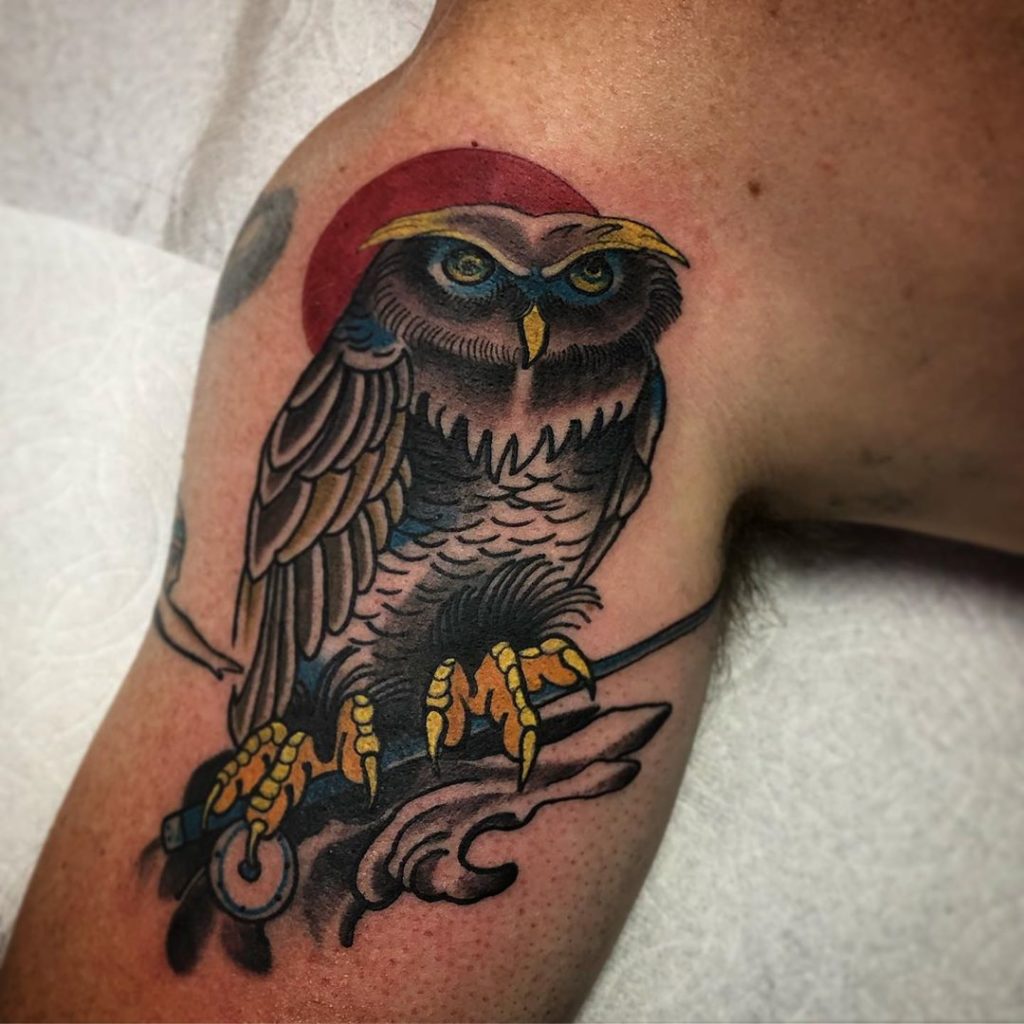
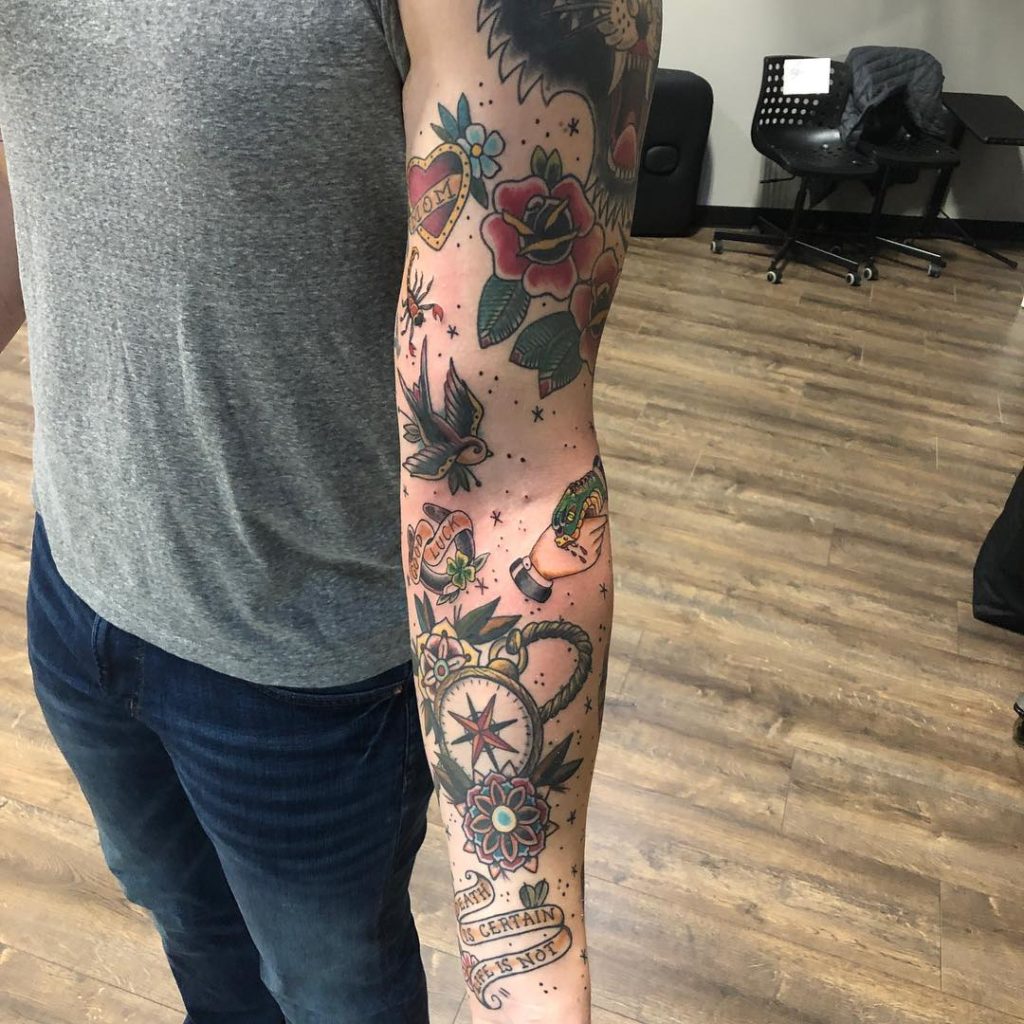
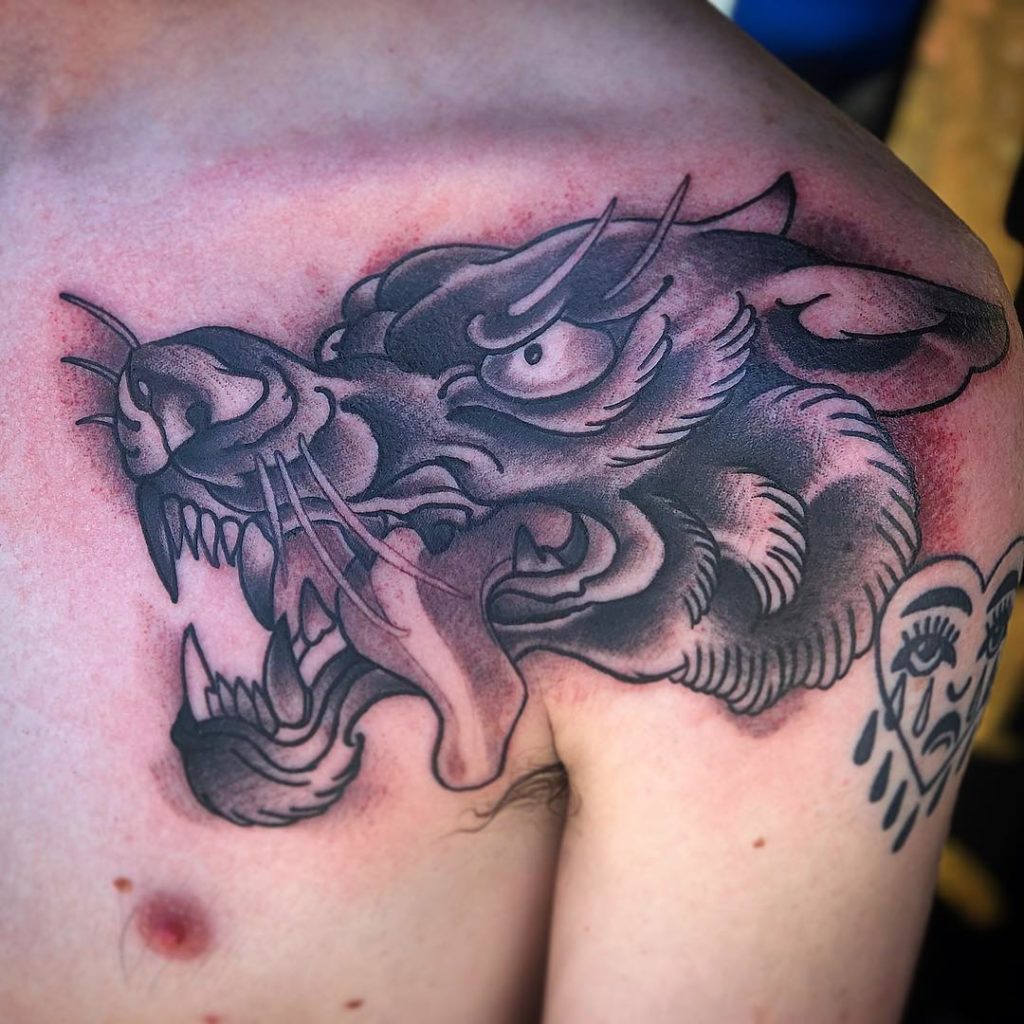
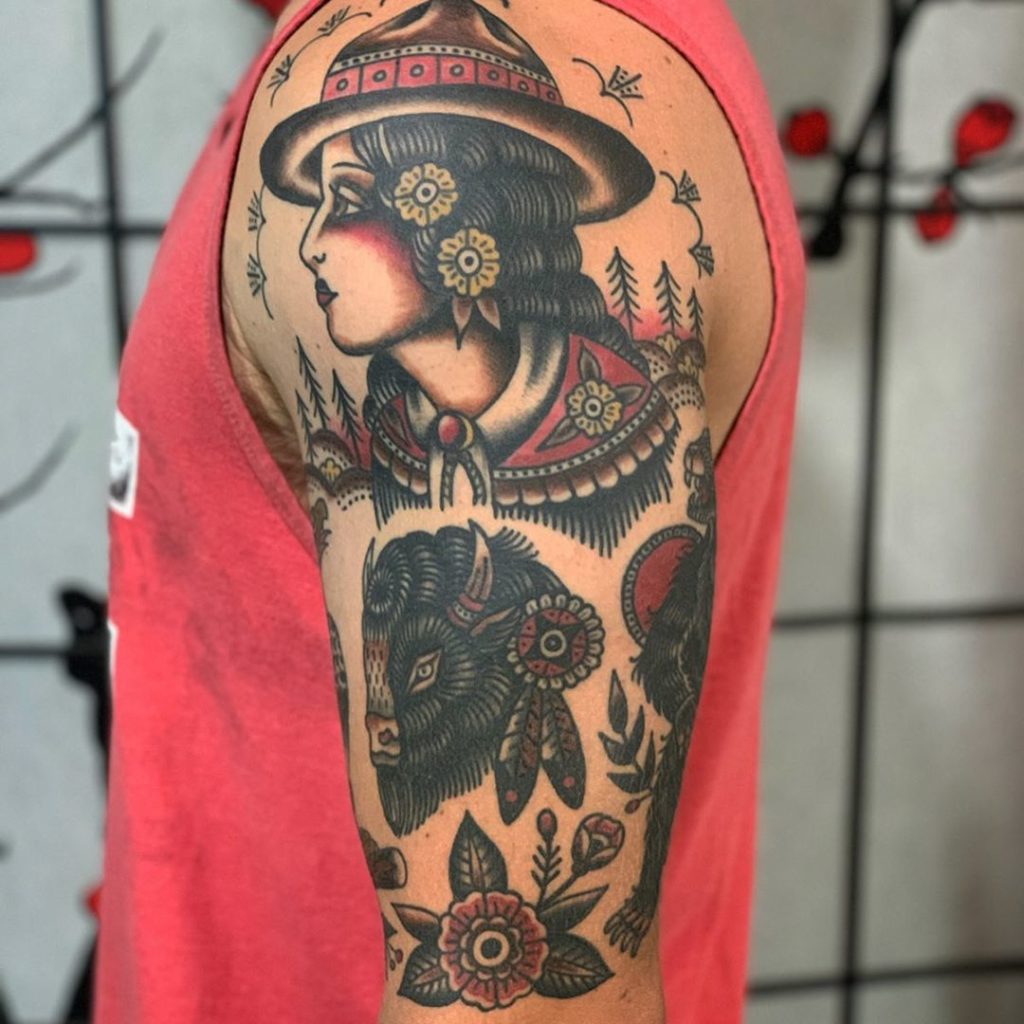
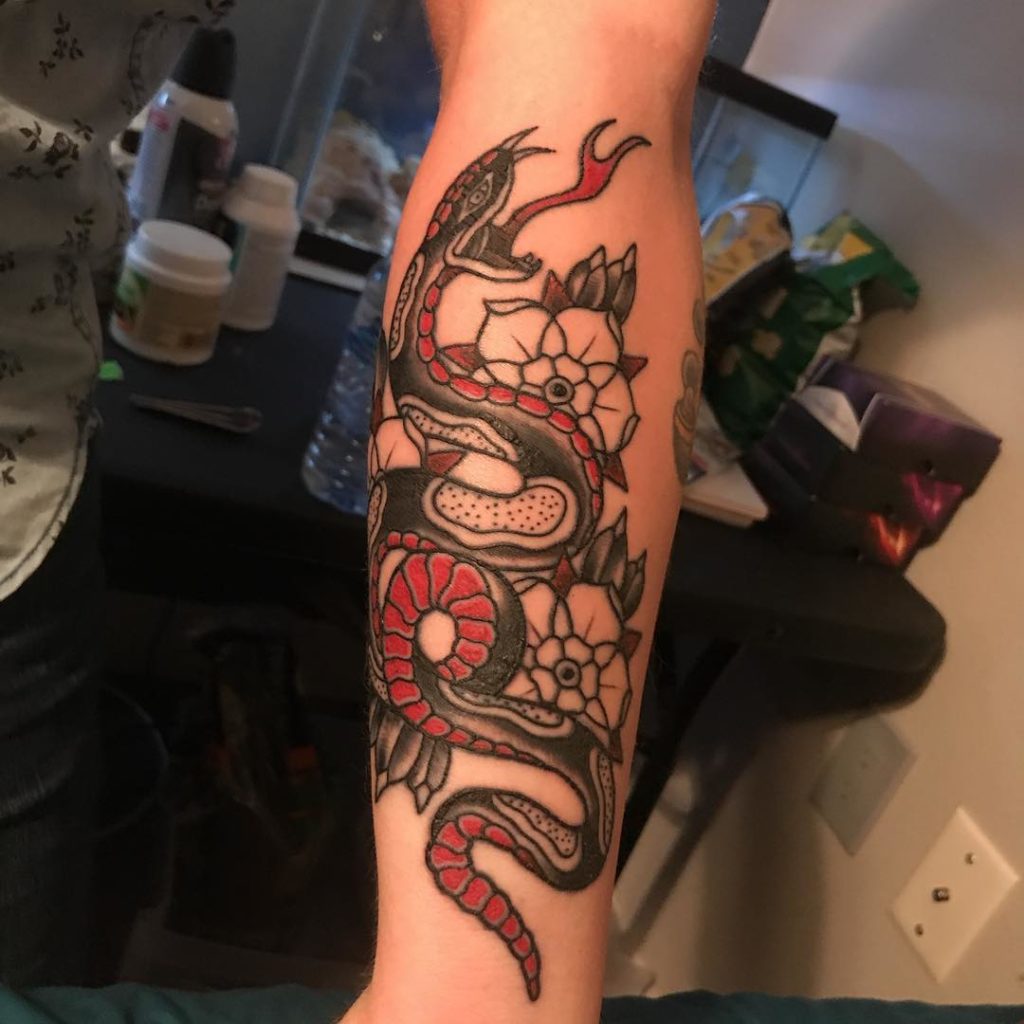
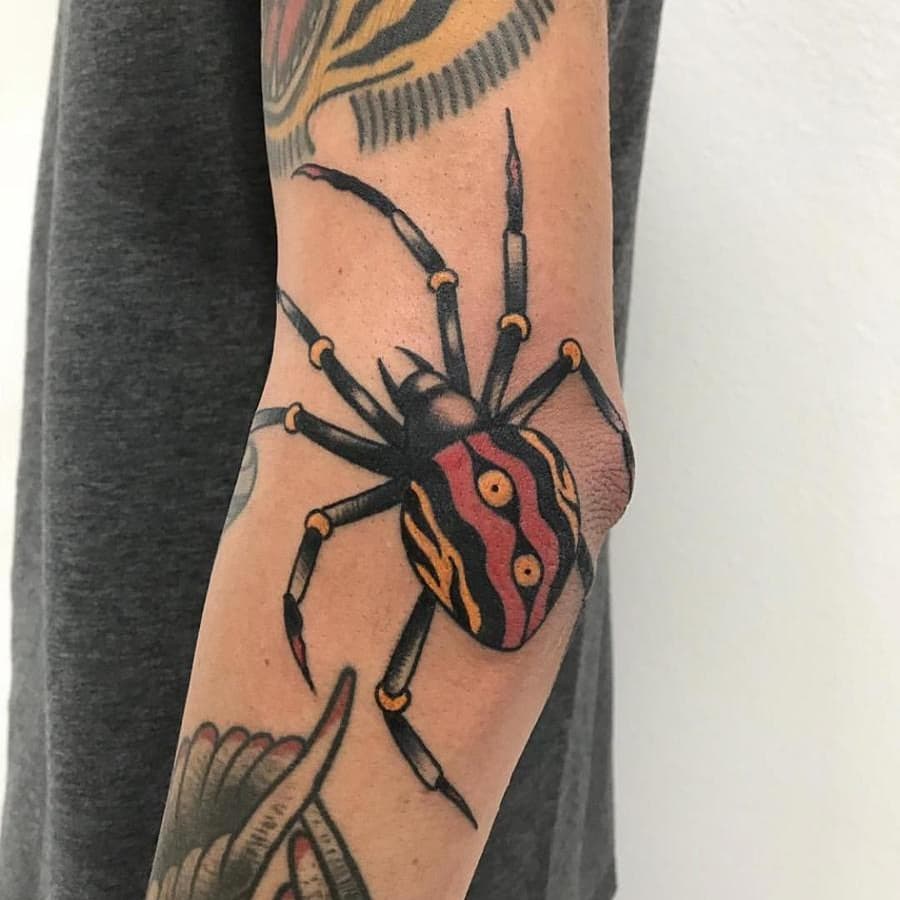
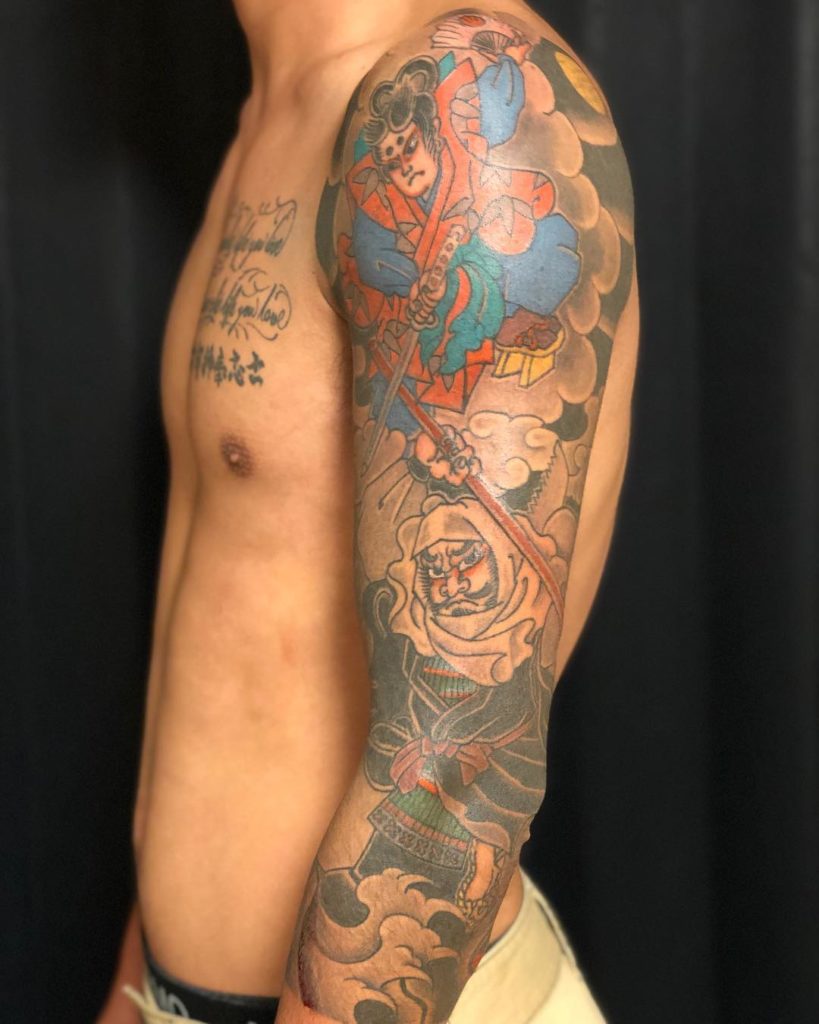
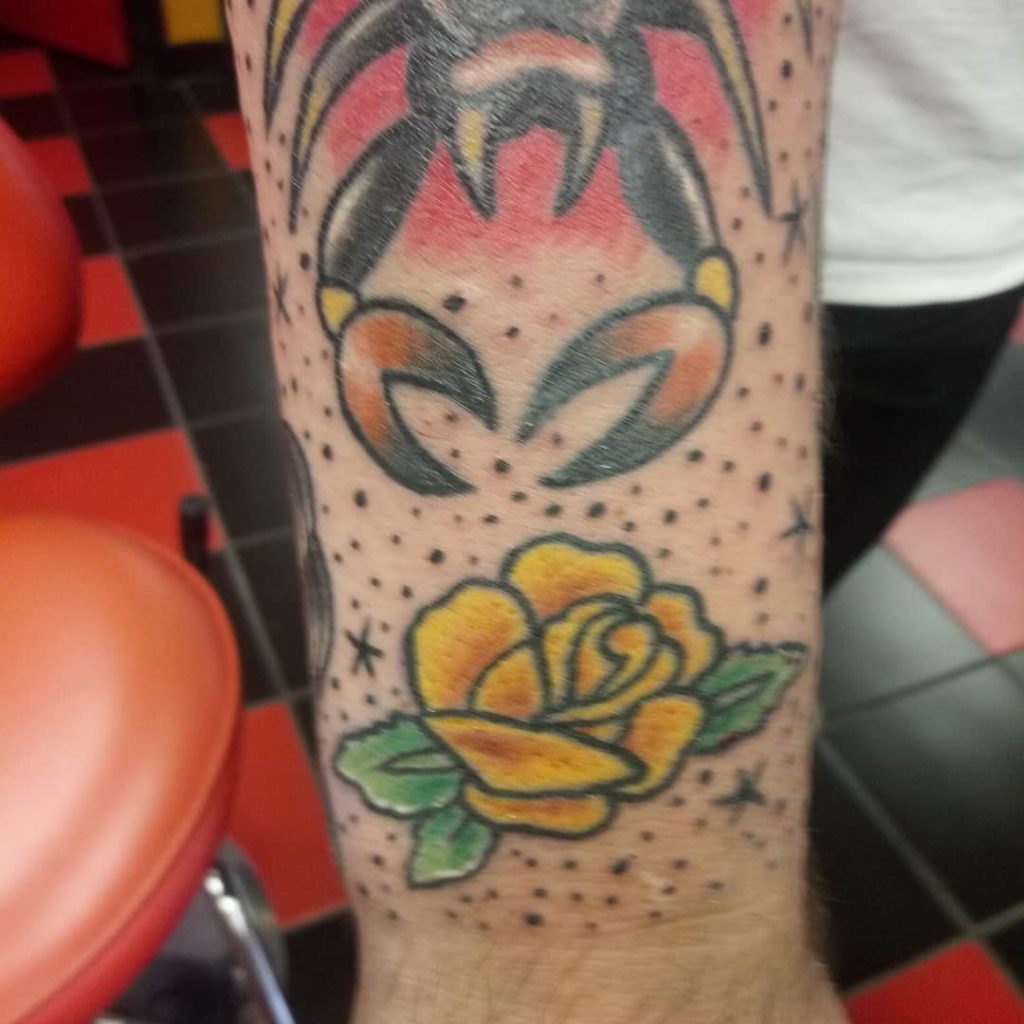
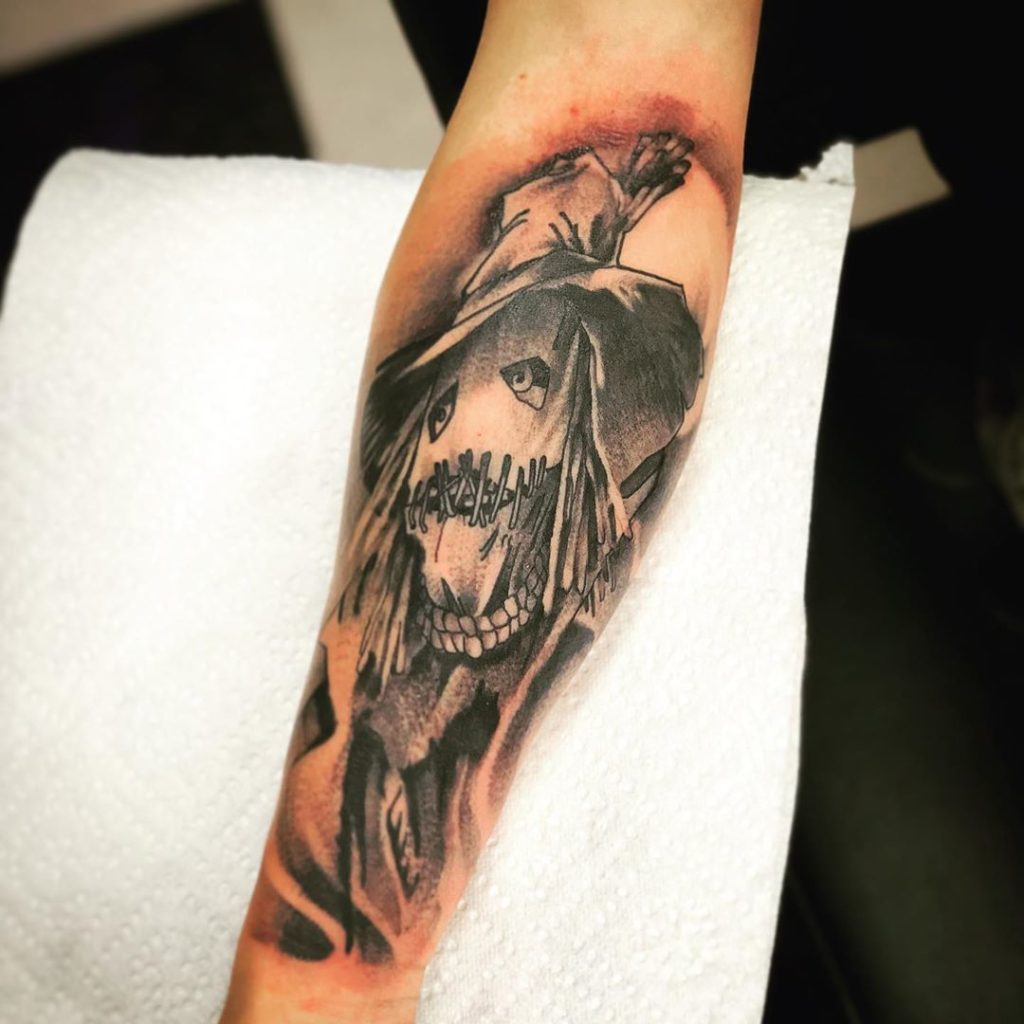
6 Fundamental Characteristics Of Traditional Tattooing To Understand!
Traditional tattooing, also known as American Traditional or Old School, is a tattooing style with deep roots and a distinctive aesthetic. Its key features are outlined below:
- Bold, Black Outlines: One of the defining characteristics of traditional tattoos is their heavy, bold black outlines. These thick lines encapsulate the imagery and give it a robust definition.
- Limited Color Palette: Traditional tattoos often stick to a minimal color palette. Primary colors like black, red, green, and yellow are most commonly used. The simplicity of these colors contributes to the longevity and visibility of the tattoo.
- Simple, Iconic Imagery: Traditional tattoos typically use simple, iconic images that are immediately recognizable. This might include nautical symbols like anchors and ships, nature motifs like roses and eagles, or objects such as hearts and skulls. The imagery is straightforward, often symbolizing universal themes like love, freedom, or mortality.
- Solid Fill: Traditional tattoos often use solid fill techniques, with large areas of color filled in uniformly. This technique, combined with the bold black outlines, makes traditional tattoos highly visible and striking, even from a distance.
- Minimal Shading: While shading is used in traditional tattooing, it is usually kept to a minimum. When shading is present, it’s often in the form of simple black or single color gradations, maintaining the clean, bold aesthetic.
- Composition and Design: Traditional tattoos often have a balanced, symmetrical composition. They typically feature a central image or theme, surrounded by complementary elements. This gives the design a clear, readable structure, adding to its timeless appeal.
Remember, despite these common characteristics, each tattoo artist may bring their unique style or interpretation to traditional tattooing, resulting in a wide variety of artistic expressions within this genre.
5 Seminal Tattoo Artists That Shaped The Tradition Tattoo Genre
- Sailor Jerry (Norman Keith Collins): A pivotal figure in modern tattooing, Sailor Jerry is often considered the godfather of American traditional tattooing. His style was characterized by bold lines, a limited color palette, and iconic imagery such as pin-up girls, ships, and swallows. His work significantly shaped the traditional style, blending Eastern and Western influences and pushing for higher hygiene standards in the industry.
- Ed Hardy: Known for his traditional style with a contemporary twist, Ed Hardy modernized many of the themes seen in traditional tattooing. Hardy trained under Sailor Jerry, and later expanded his knowledge by studying non-Western tattoo traditions. He is renowned for popularizing tattooing as an art form, rather than just a subculture trend.
- Don Ed Hardy: Not to be confused with Ed Hardy, Don Ed Hardy is another influential figure in traditional tattooing. Known as the ‘Godfather of the Modern Tattoo,’ he was one of the first Westerners to incorporate Japanese tattoo aesthetics into his work, blending them seamlessly with the American traditional style.
- Bert Grimm: Known as one of the most influential American tattoo artists of the 20th century, Bert Grimm’s work has a significant impact on traditional tattooing. His style is characterized by strong outlines, vibrant colors, and iconic imagery, including pin-up girls, roses, and sailor motifs.
- Amund Dietzel: Known as the “Master in Milwaukee,” Amund Dietzel brought traditional tattooing to the Midwest after learning the art while at sea. He blended maritime designs with elements of traditional American imagery, developing his unique style.
These tattoo artists have each made significant contributions to the art of traditional tattooing, shaping it into the diverse and vibrant art form that it is today. Their unique adaptations and interpretations of traditional tattooing have left a lasting impact on the industry, influencing countless artists worldwide.
Everything You Needed to Know About Getting A Traditional Tattoo
- Selection of Design: This is the first step and possibly one of the most important. You need to decide what you want as a tattoo. Traditional tattoo designs are known for their iconic imagery, so do your research, gather inspiration, and think about what symbols or designs resonate with you.
- Choosing the Tattoo Artist: Once you have a design in mind, the next step is choosing an artist who specializes in traditional tattoos. Look at portfolios, read reviews, and perhaps schedule a consultation to discuss your design and their style.
- Placement: The placement of your tattoo can significantly impact its final look. The artist will help guide you on this, taking into account the design, your anatomy, and your personal preferences.
- Stencil and Placement: After you’ve chosen the placement, the artist will create a stencil of your tattoo. This stencil is applied to your skin, allowing you to see the placement and size before the tattooing begins.
- Tattooing: The tattoo artist will then use a tattoo machine to ink the design onto your skin, starting with the outline and then filling in the color. Depending on the size and complexity of your design, this could take several hours or multiple sessions.
- Aftercare: Proper aftercare is critical to the healing and longevity of your tattoo. Your artist will provide you with specific aftercare instructions, but generally, it involves keeping the area clean, avoiding sun exposure, and applying an approved moisturizer.
- Healing Process: Tattoos usually take about 2-3 weeks to heal on the surface, and up to a few months to heal completely beneath the skin. During this time, it’s important to take care of the tattoo and monitor for any signs of infection.
- Follow-up and Touch-ups: Once your tattoo is fully healed, you may want to schedule a follow-up appointment with your artist to ensure everything healed properly and to discuss any touch-ups if needed.
Each step is crucial in ensuring that you receive a high-quality tattoo and that it heals correctly. The process may be time-consuming, but the end result—a beautiful, meaningful piece of body art—is well worth the investment.
Conclusion
In conclusion, choosing to adorn your body with a traditional sleeve tattoo is a deeply personal and transformative journey. As we’ve explored, the process can be gradual, allowing for modifications and growth over time. Incorporating various elements from nature, mythology, or personal symbolism creates a unique expression of identity and culture, turning your body into a living canvas of art.
While it’s essential to bear in mind that tattooing involves a certain level of discomfort and requires significant time commitment, the rewards of this ancient art form are immeasurable. Tattooing also demands vigilant aftercare to mitigate risks of infection and to ensure the vibrancy and longevity of your tattoo.
Consulting with a reputable, professional tattoo artist about your ideas and concerns is paramount to achieving a result that aligns with your vision. Remember, your tattoo is a part of your story, your identity, and your self-expression. Embrace the process with the understanding that this journey isn’t just about the destination, but the personal growth and expression that comes along the way.
This exploration of traditional sleeve tattoos serves to inform and inspire. Whether you’re a novice to tattoos or a seasoned canvas, we hope this has expanded your appreciation for this enduring art form and motivated you to take the next steps in your tattooing journey. Let the world see your story, one ink stroke at a time.
Feature Image from Pinterest – Love this design? Try a Temporary Tattoo



